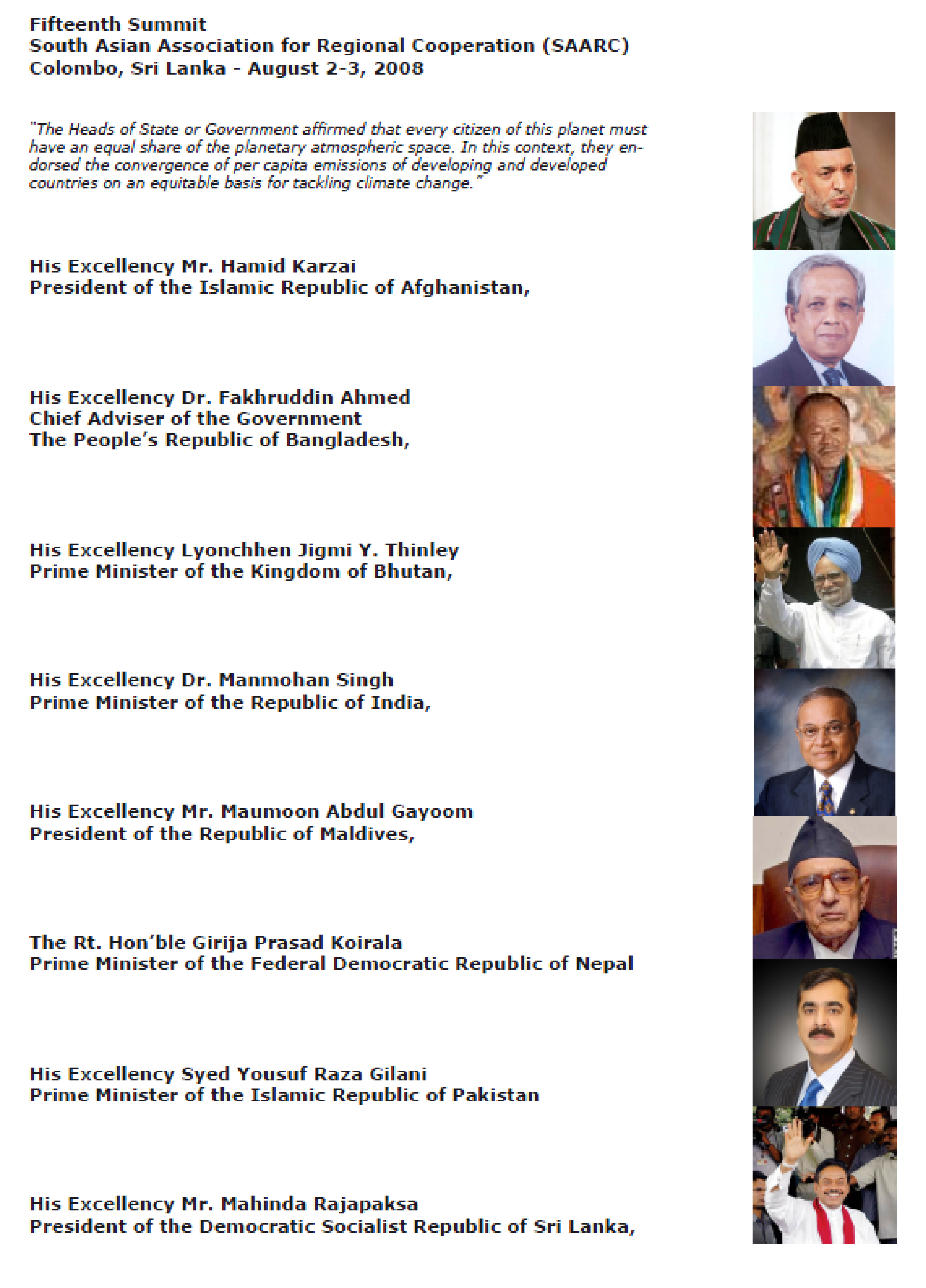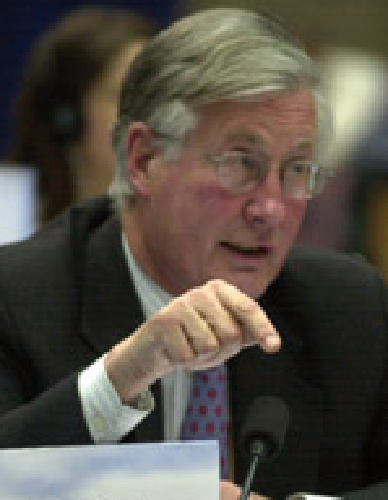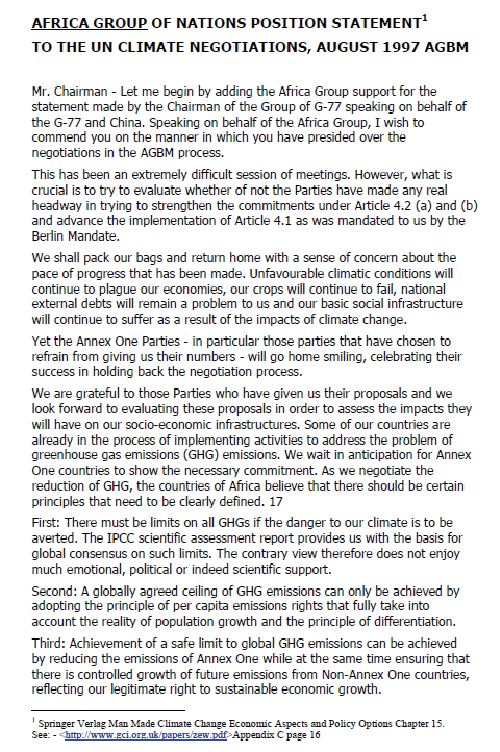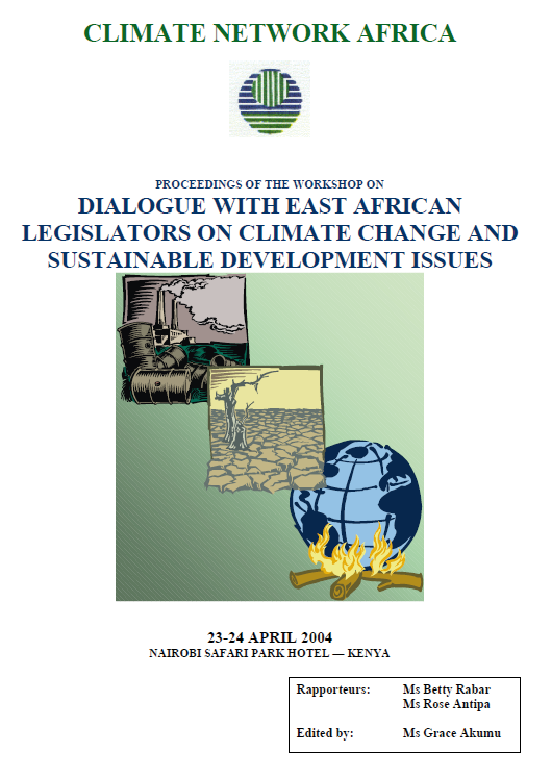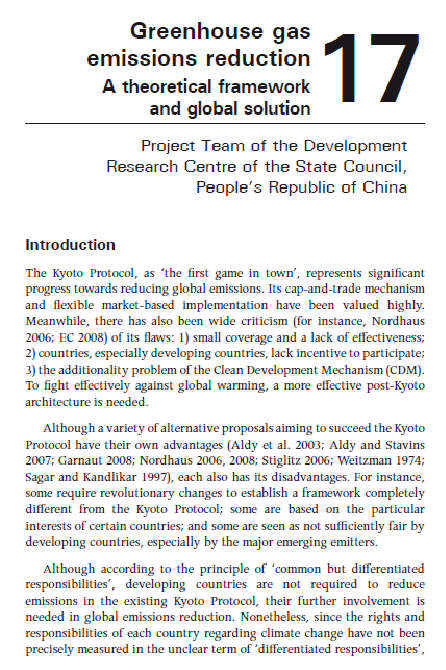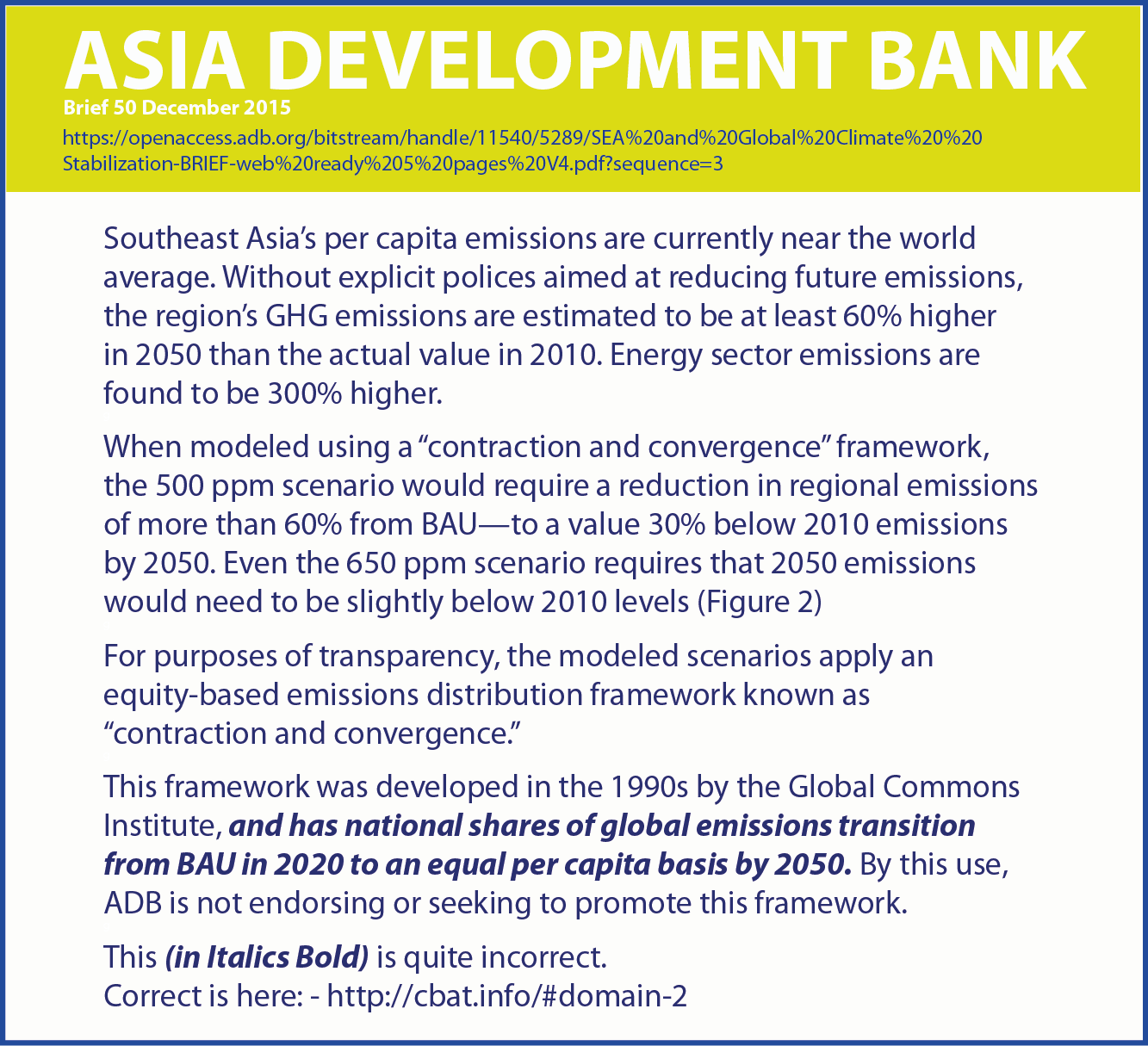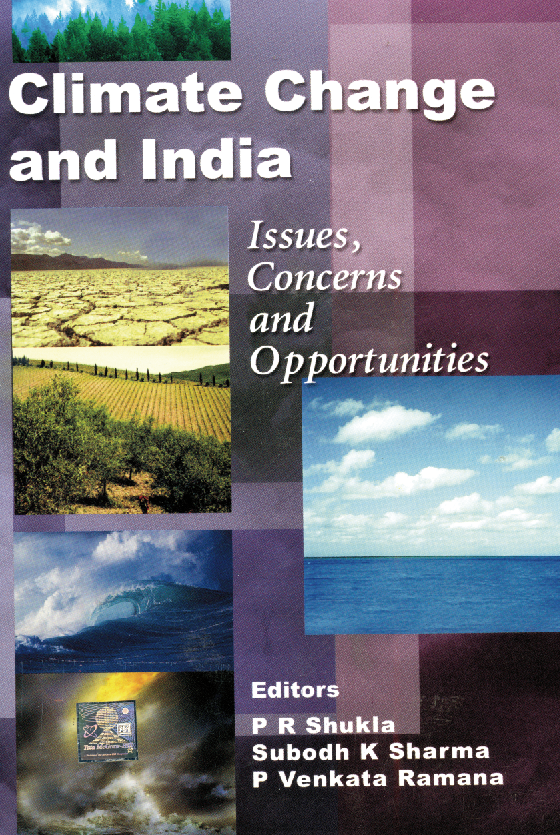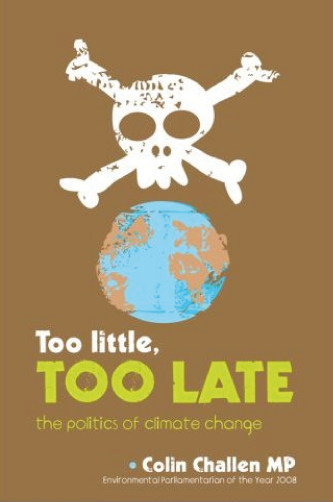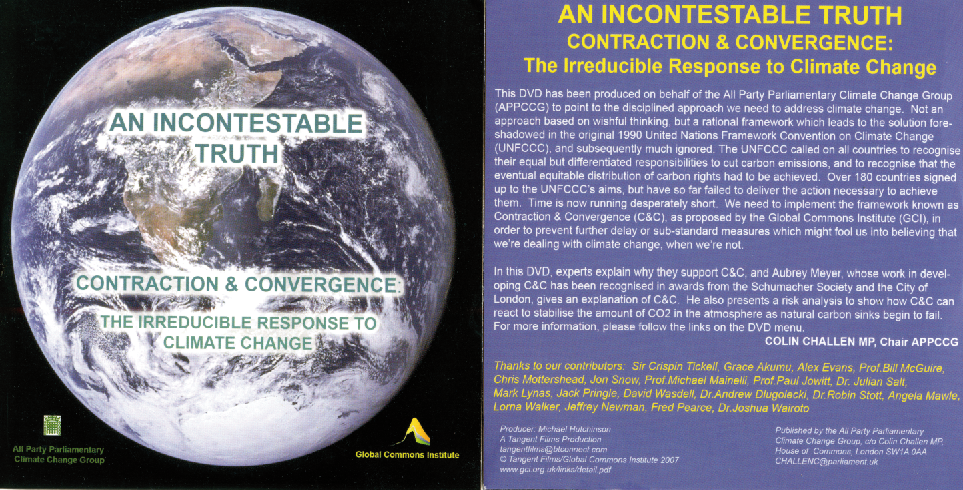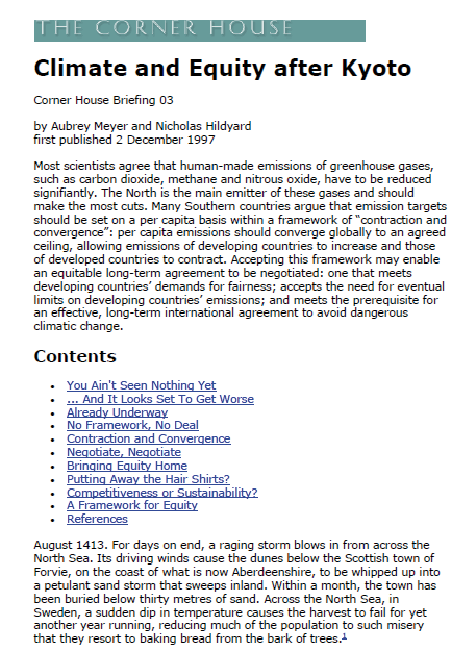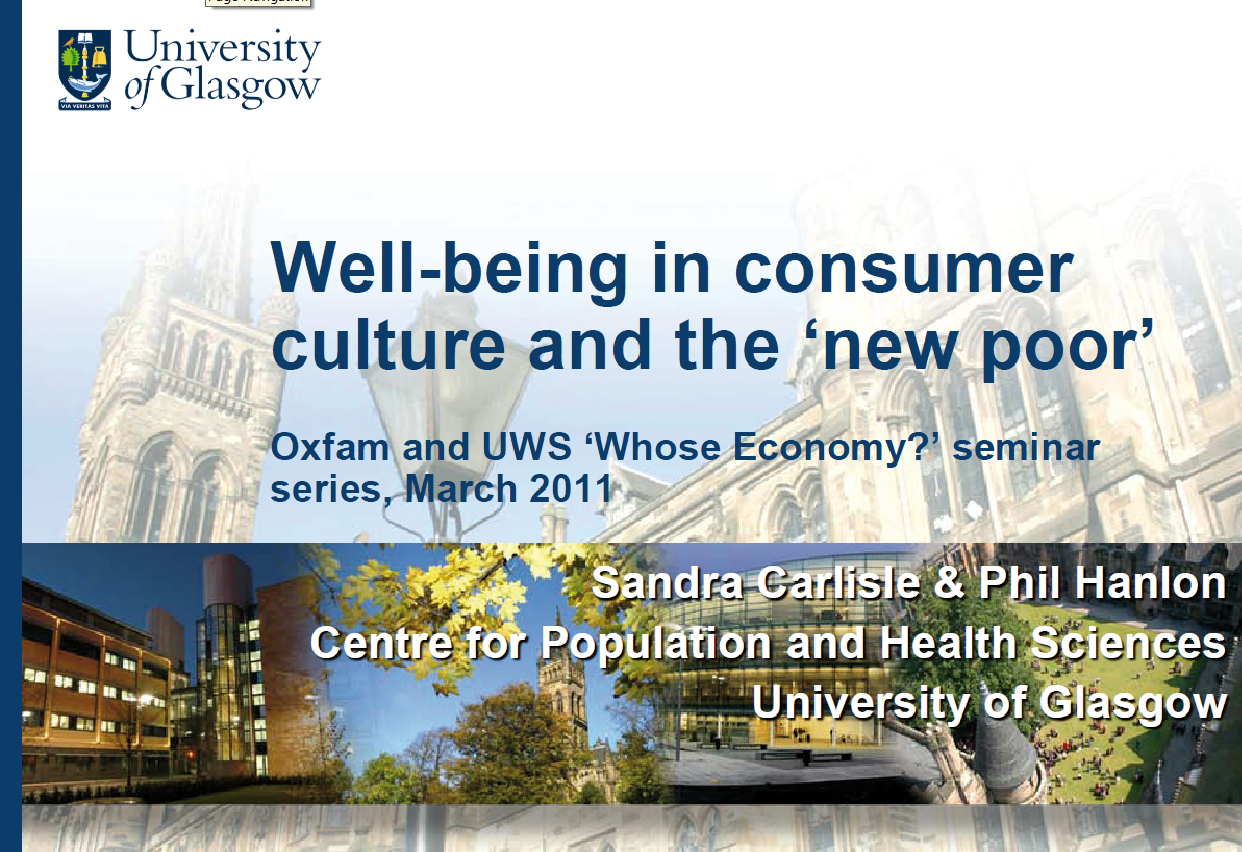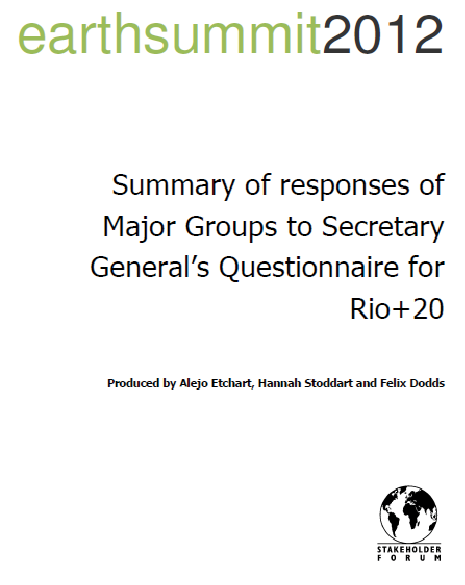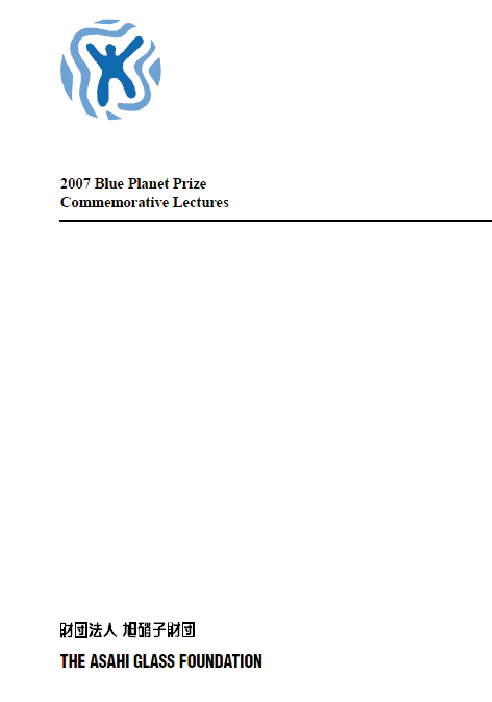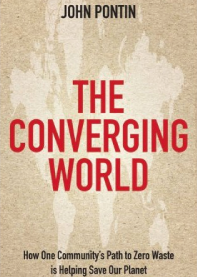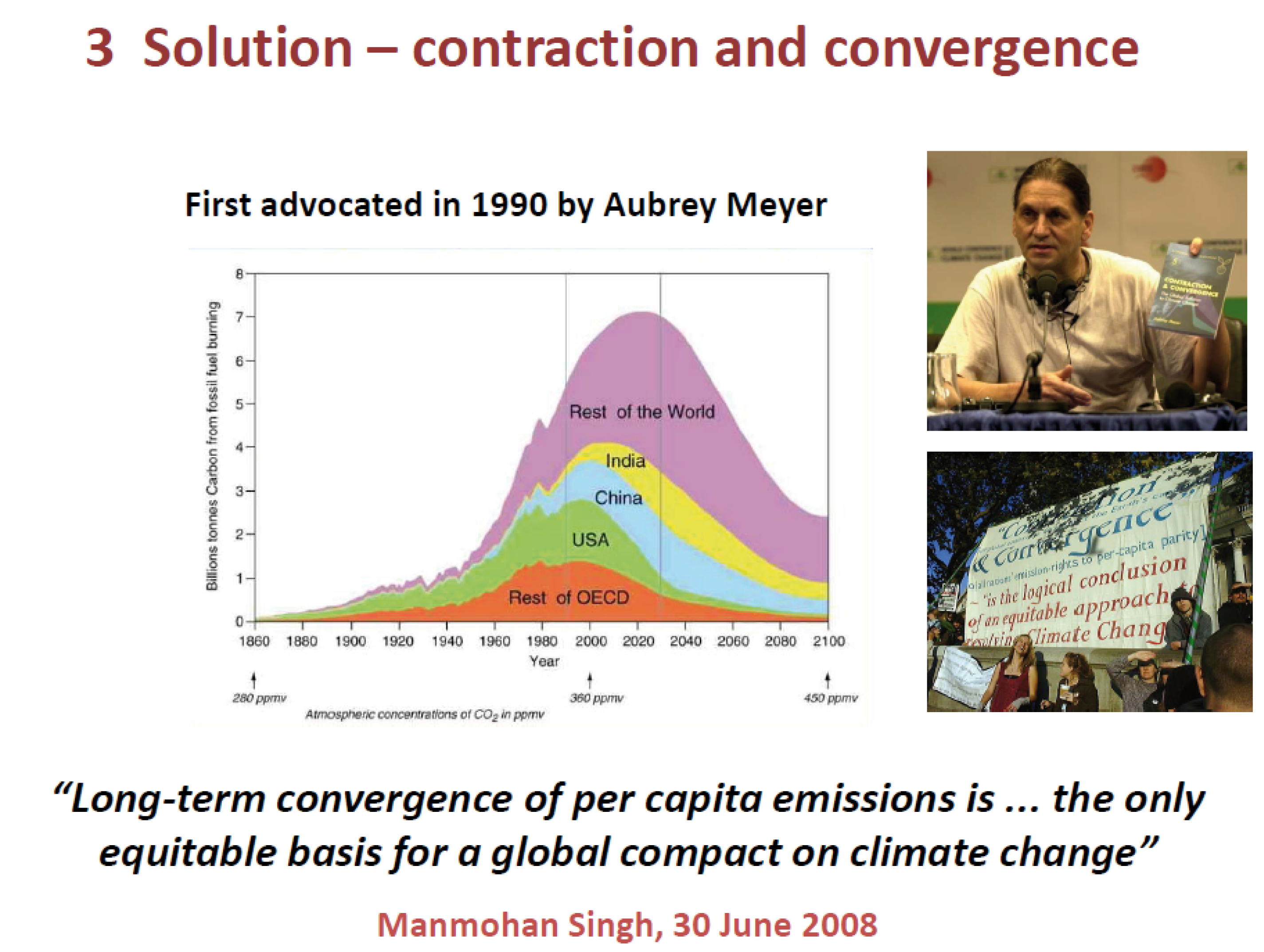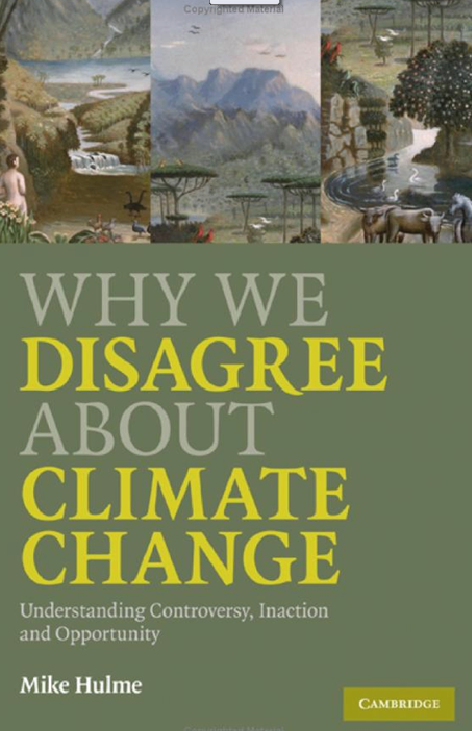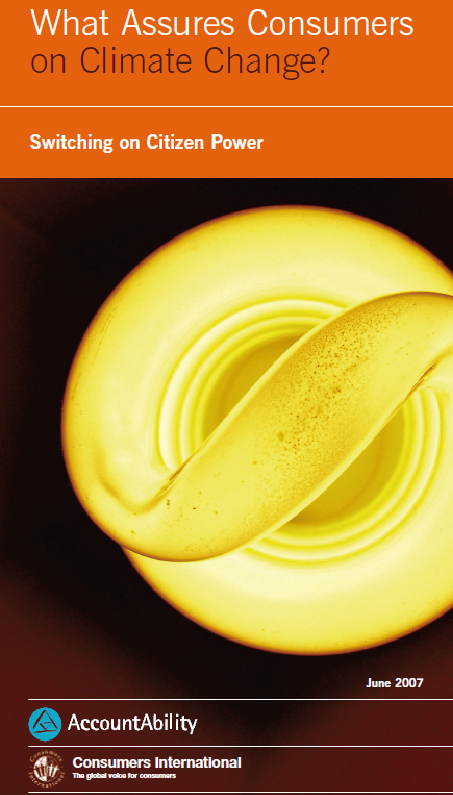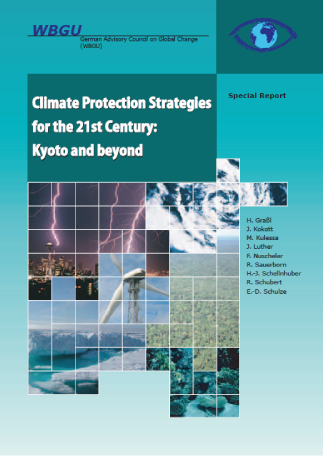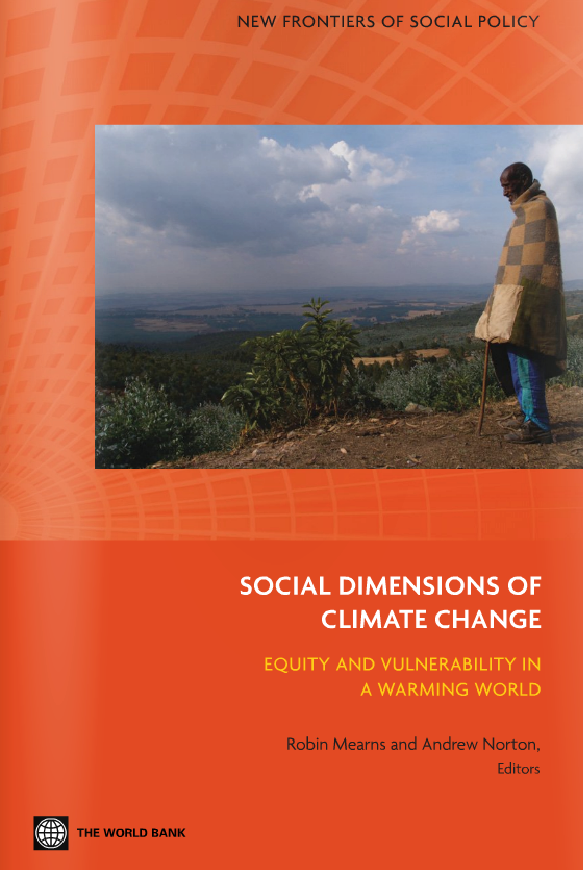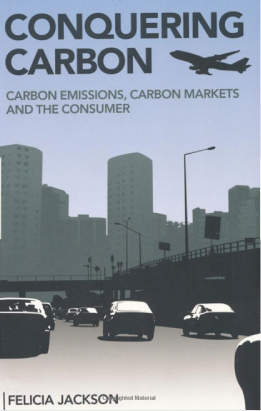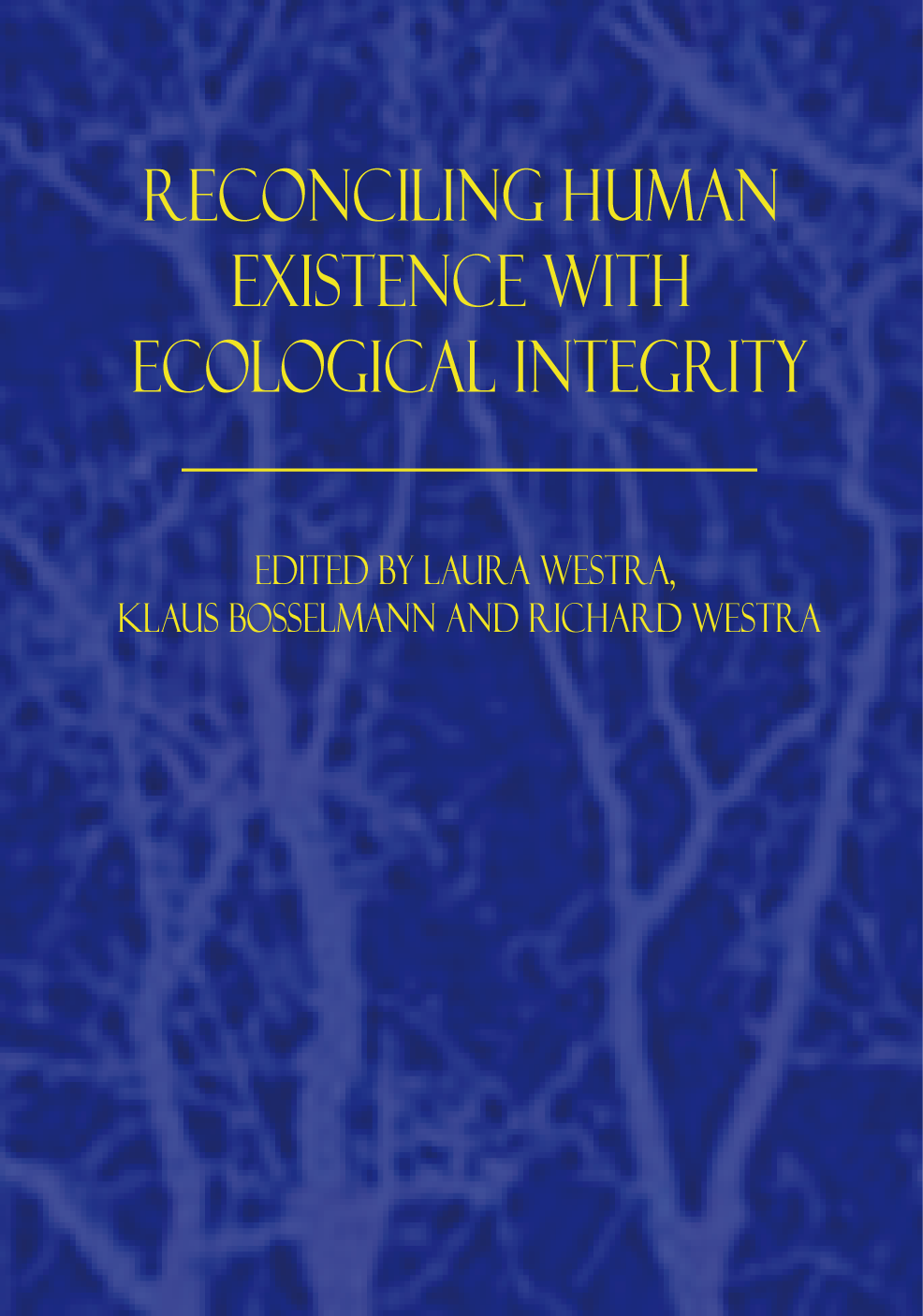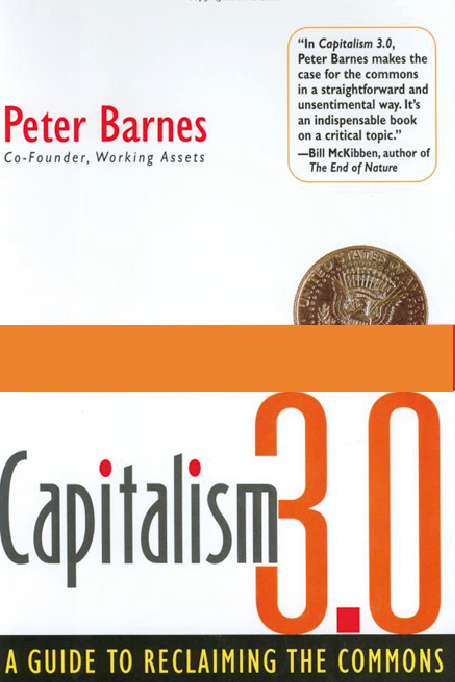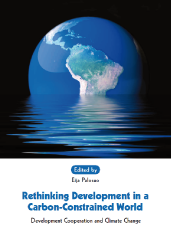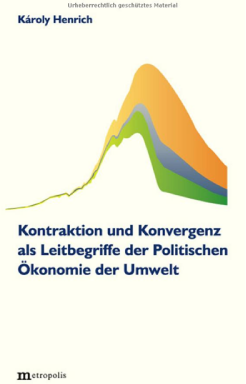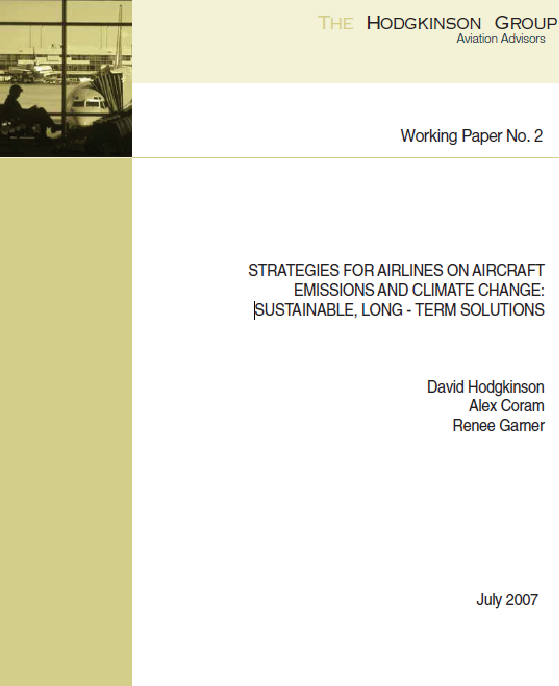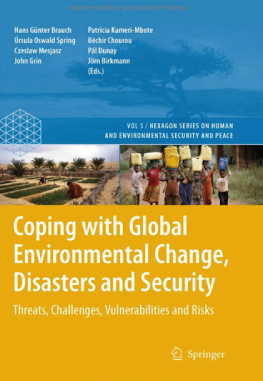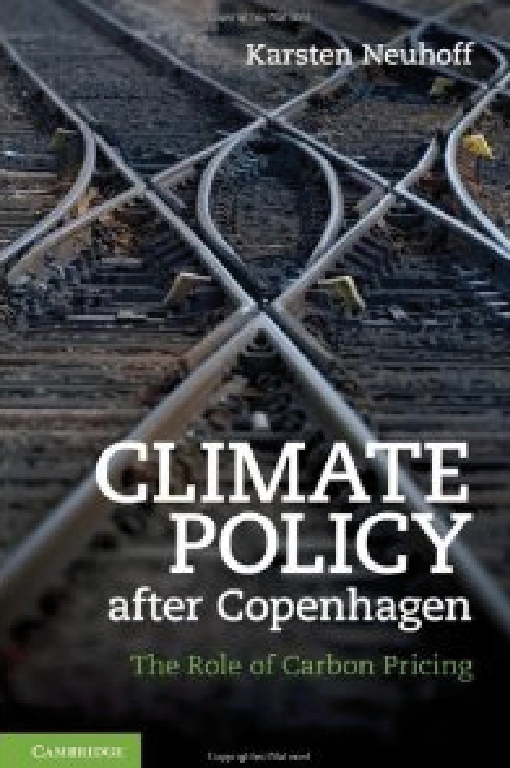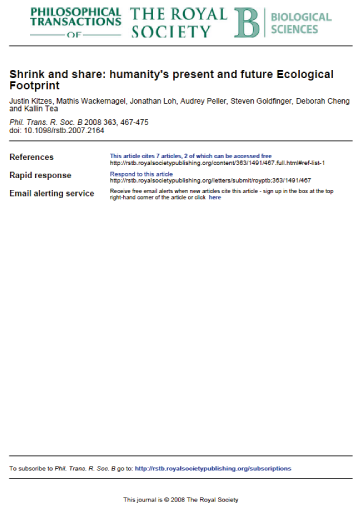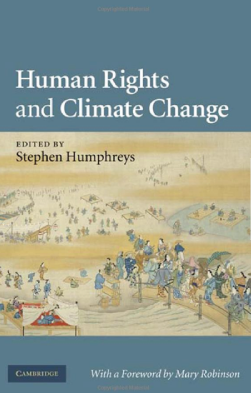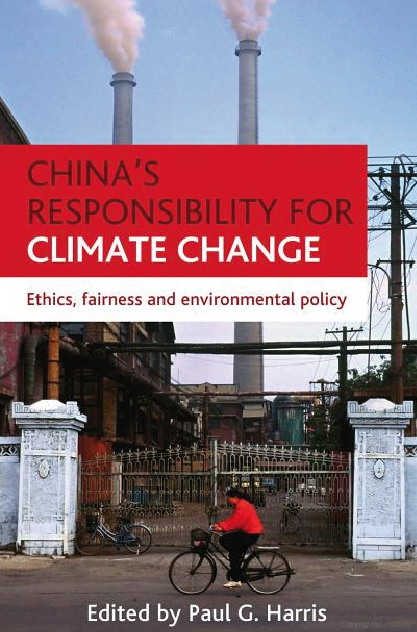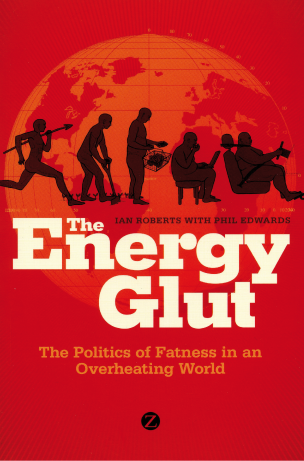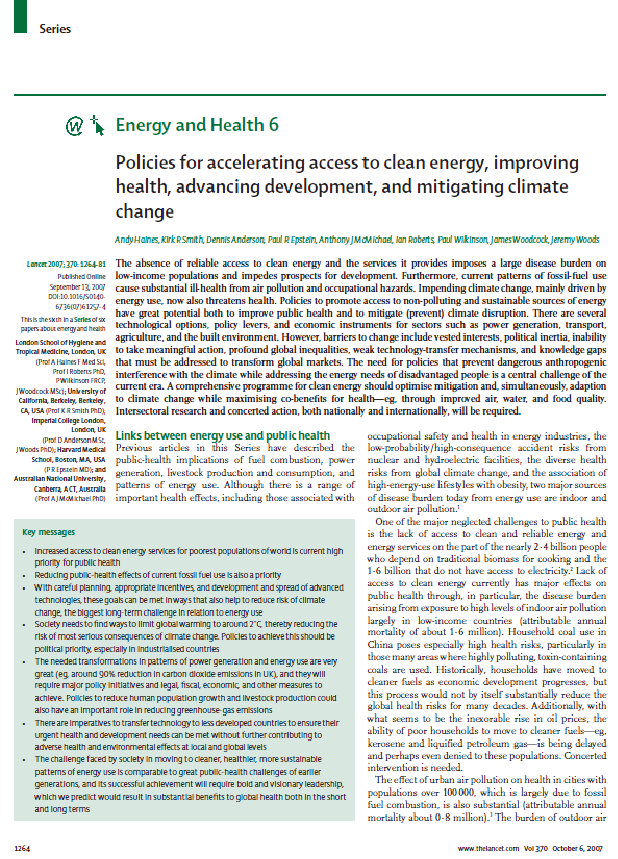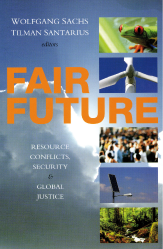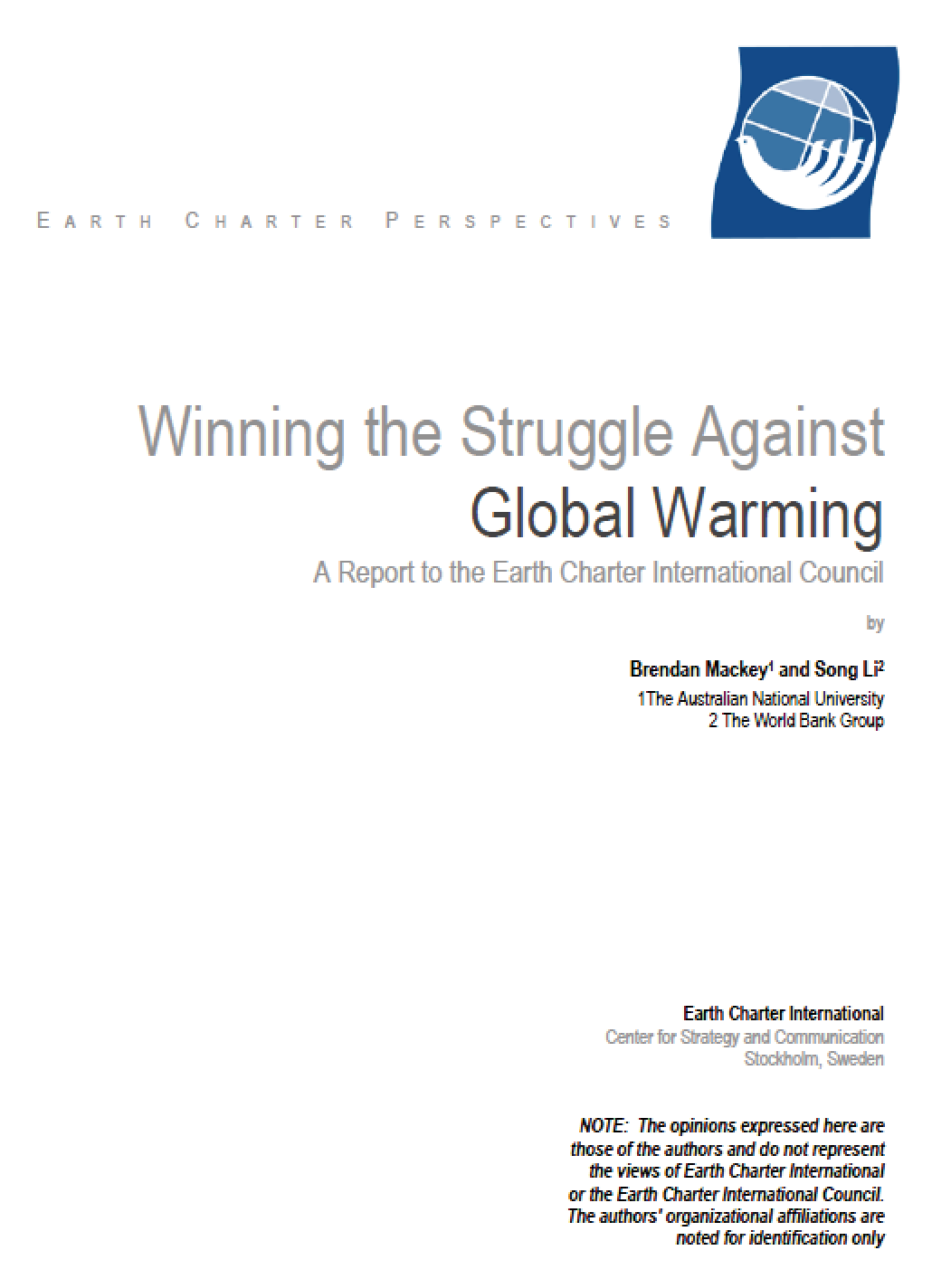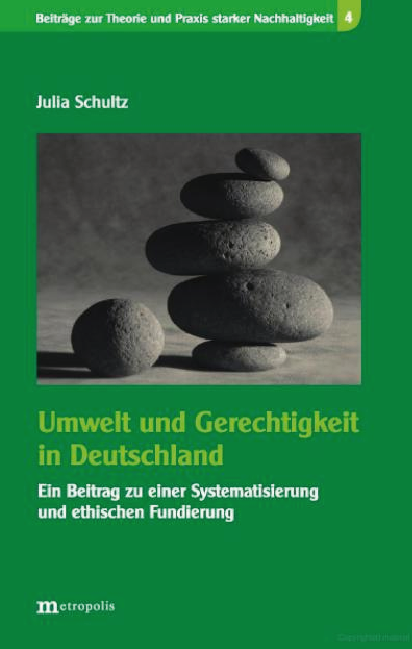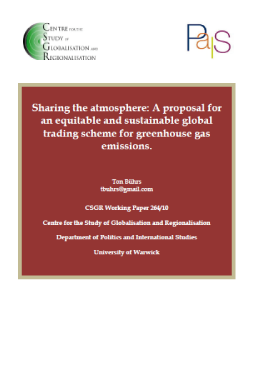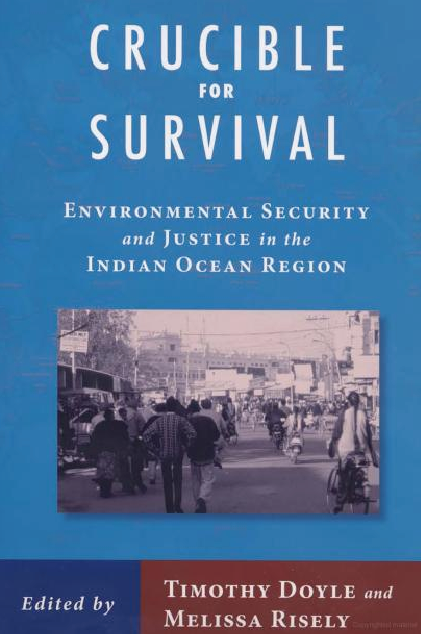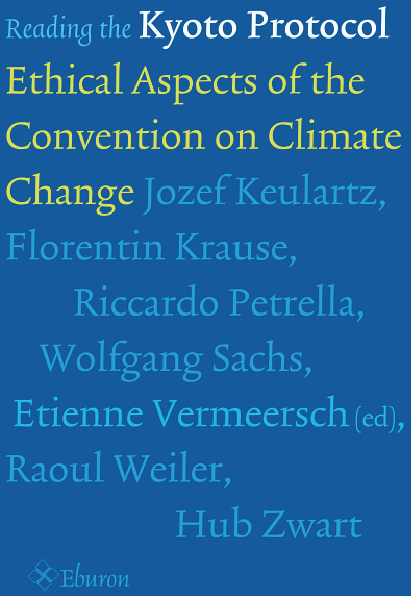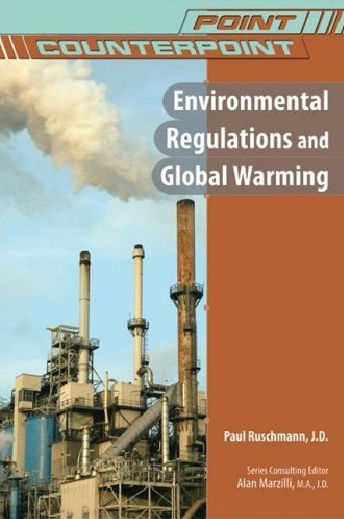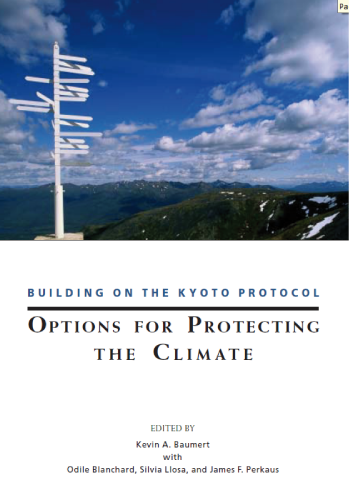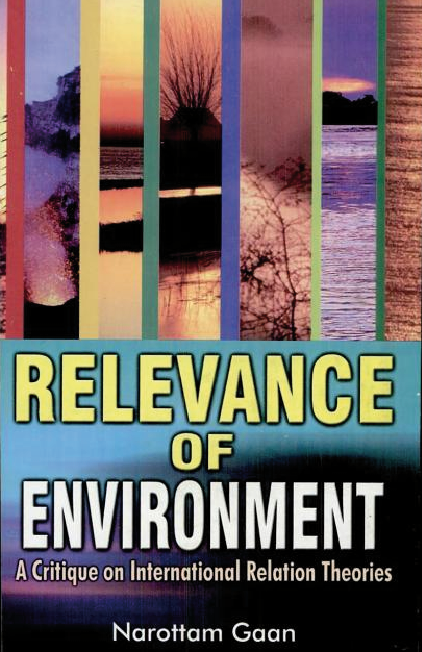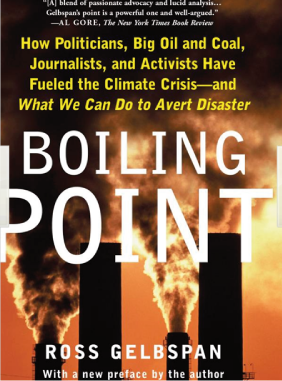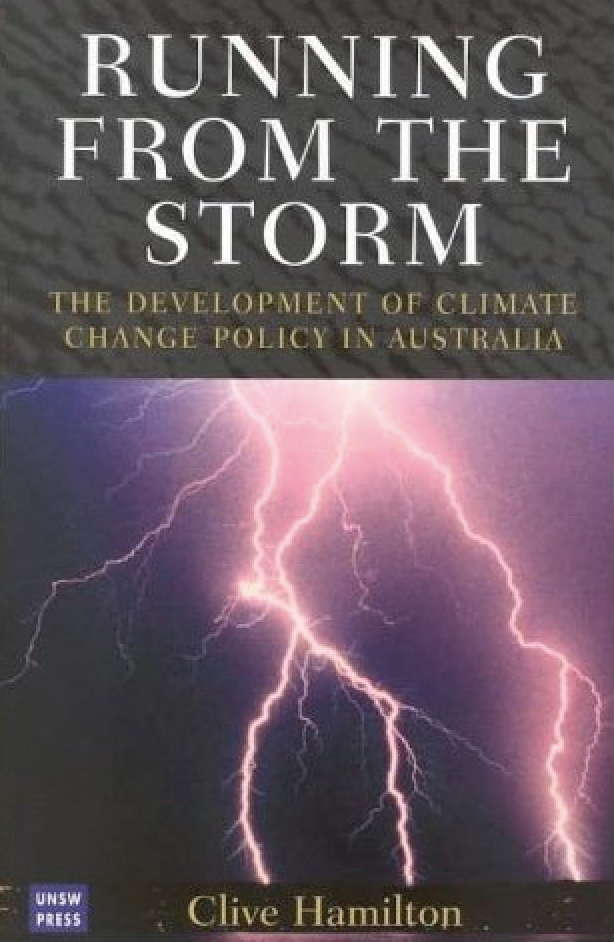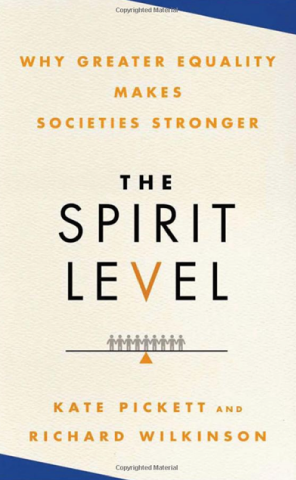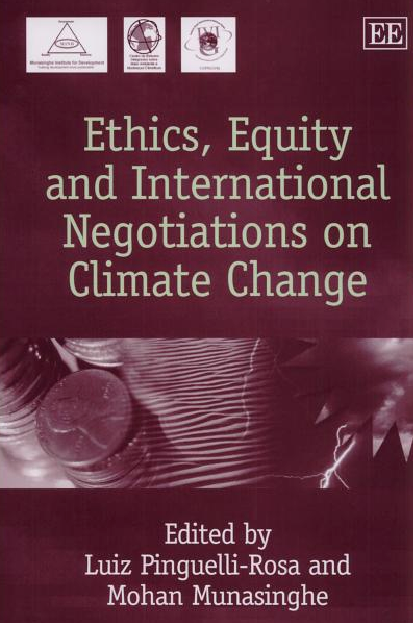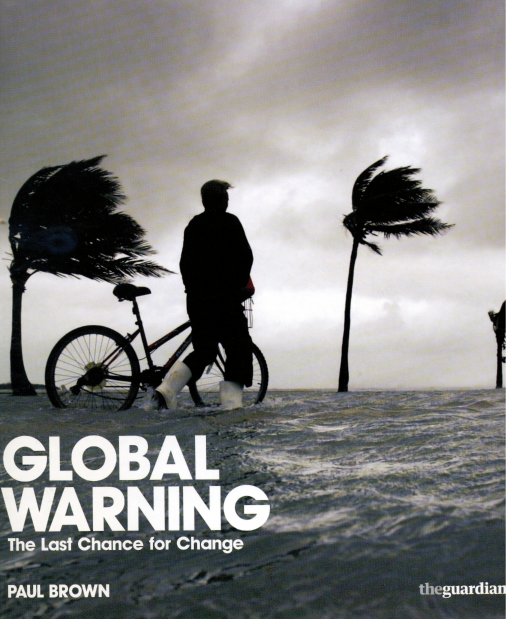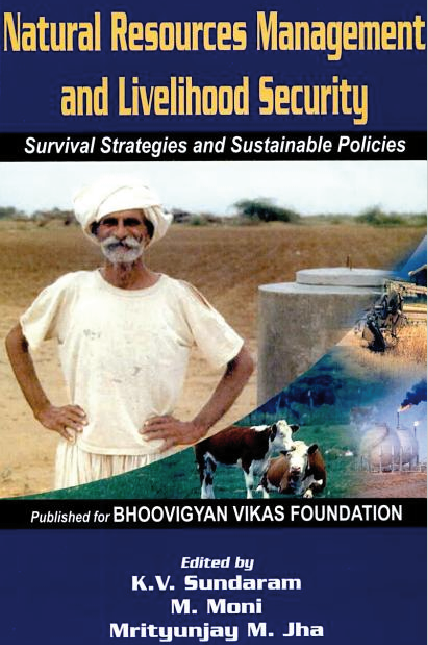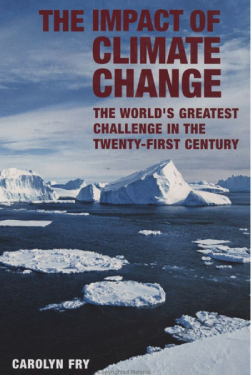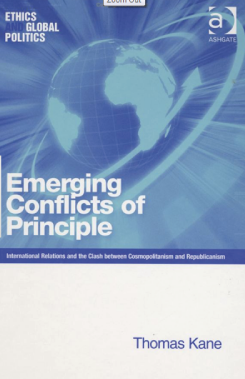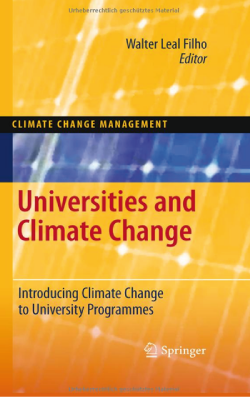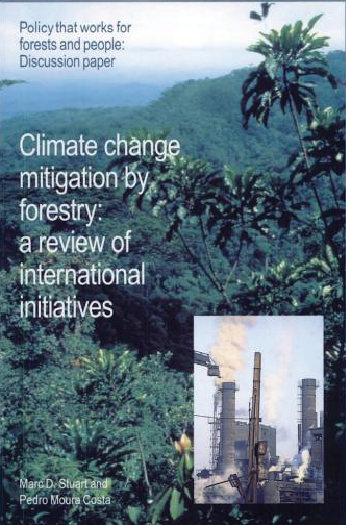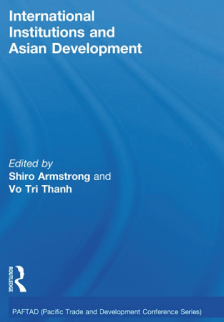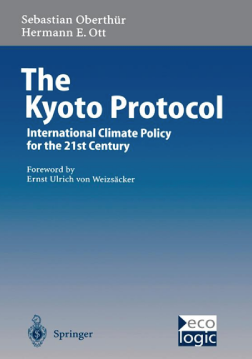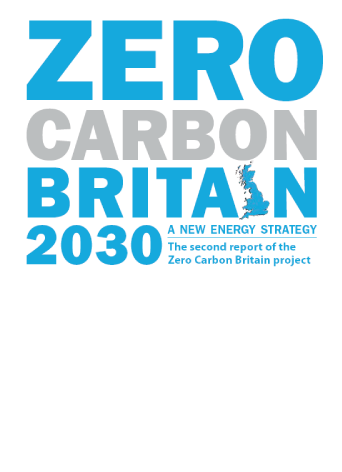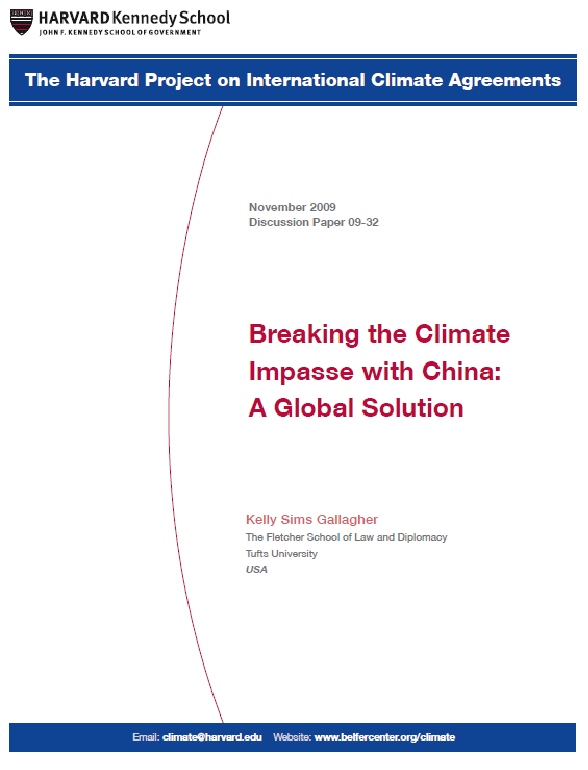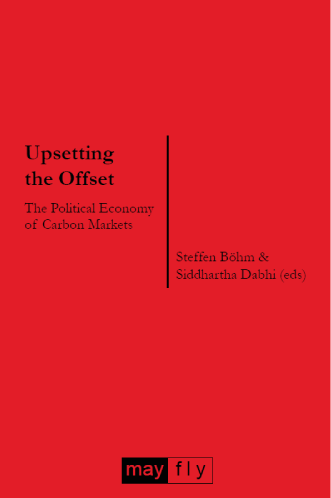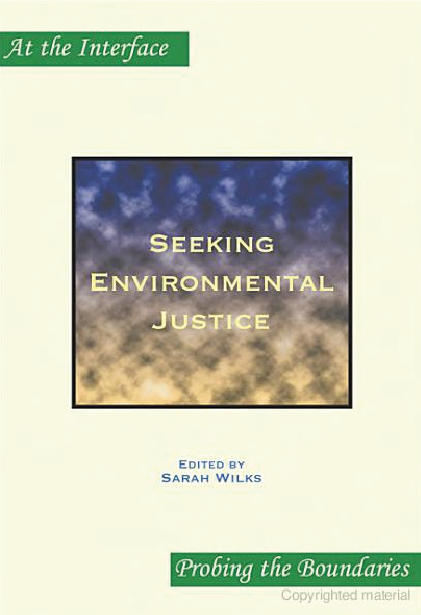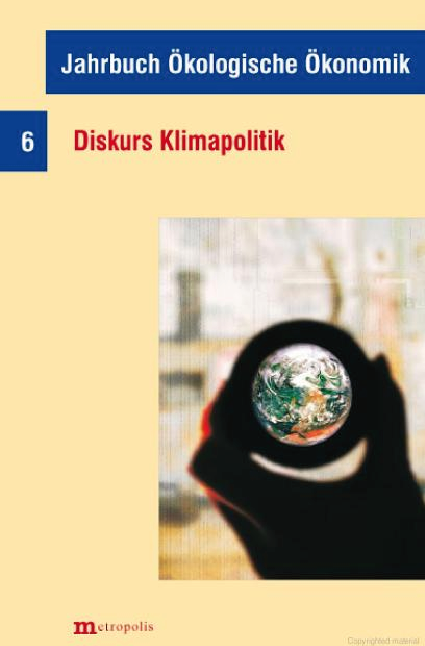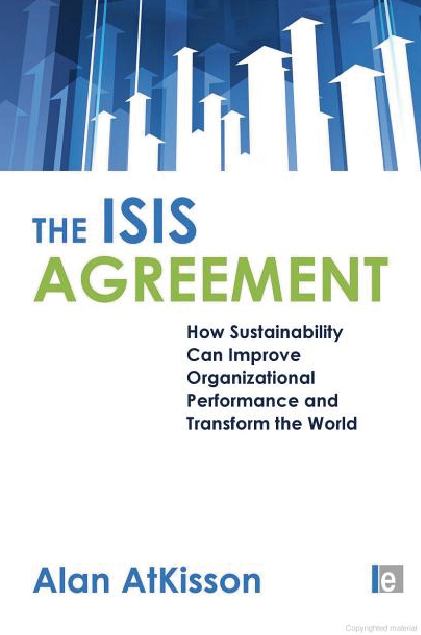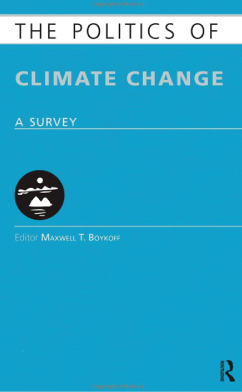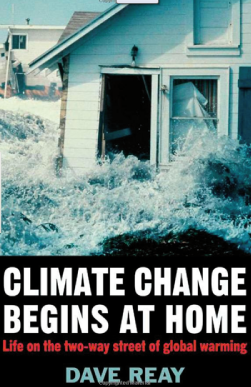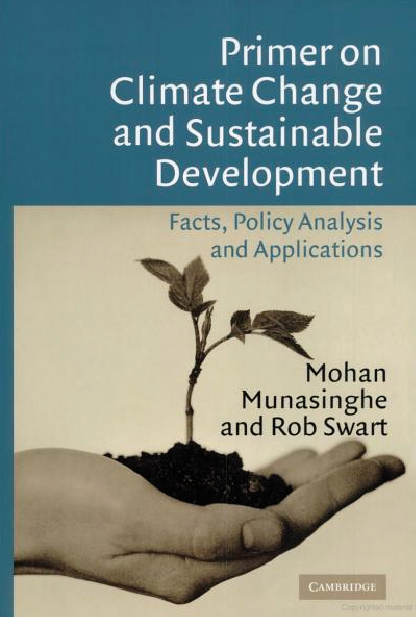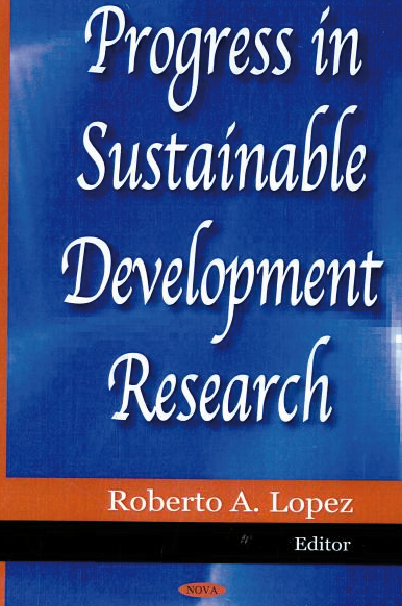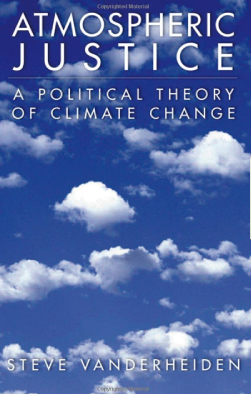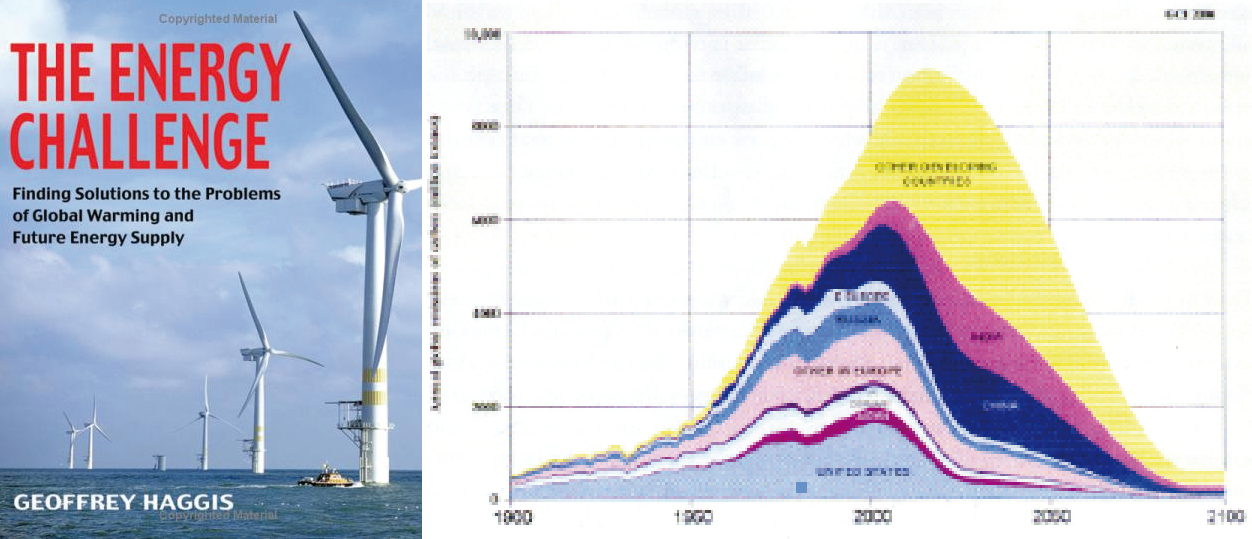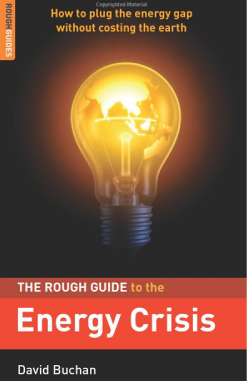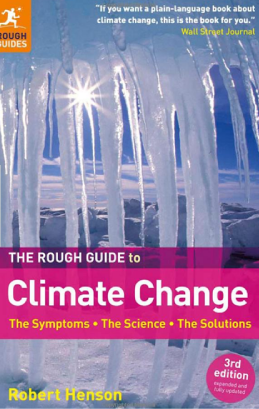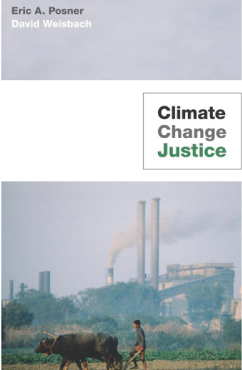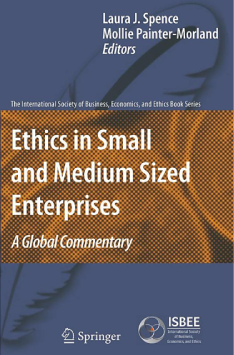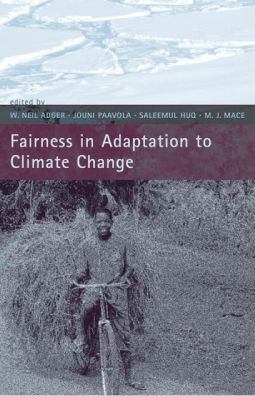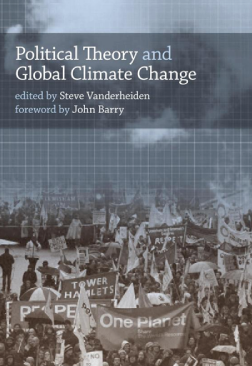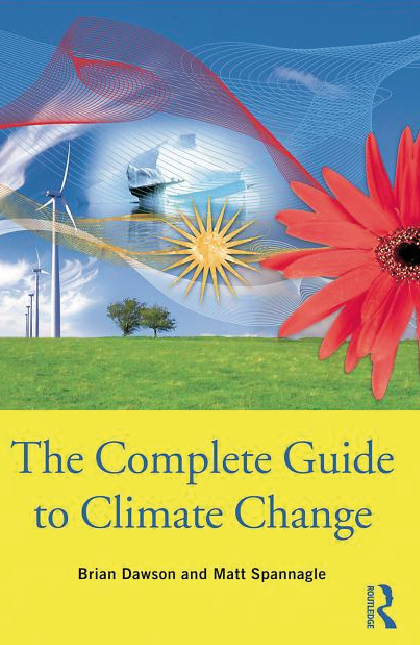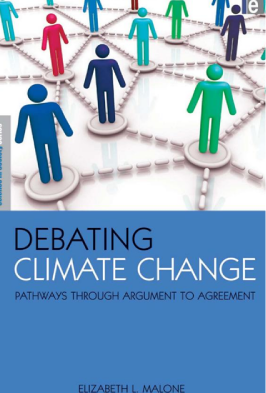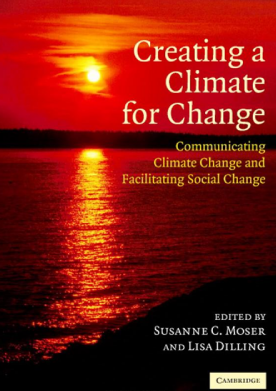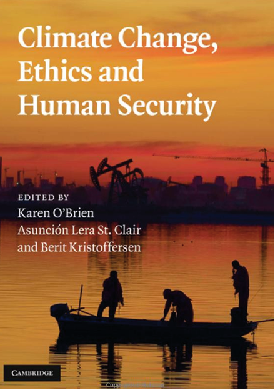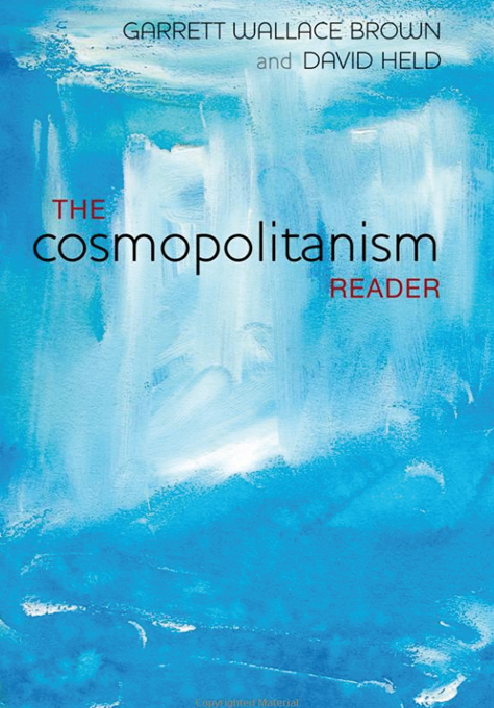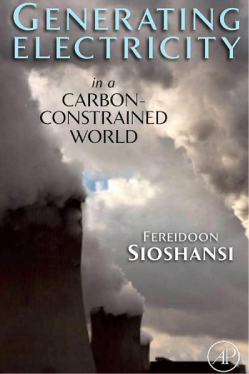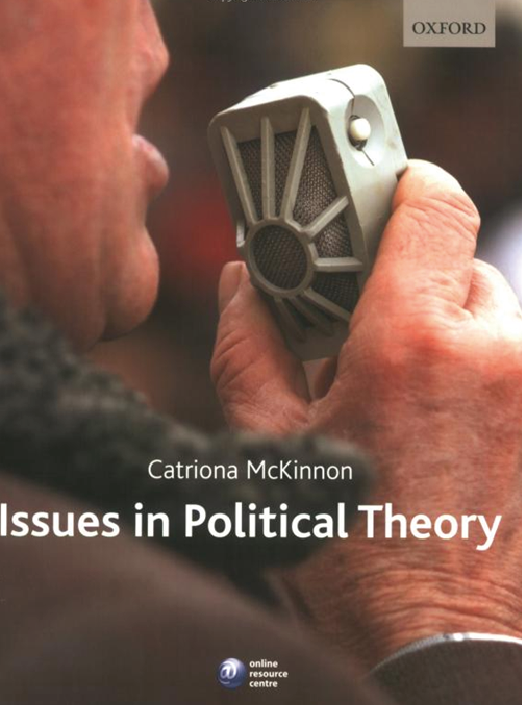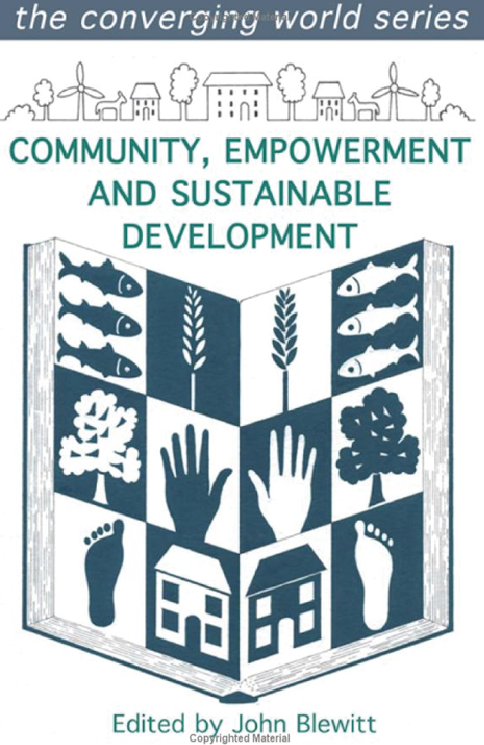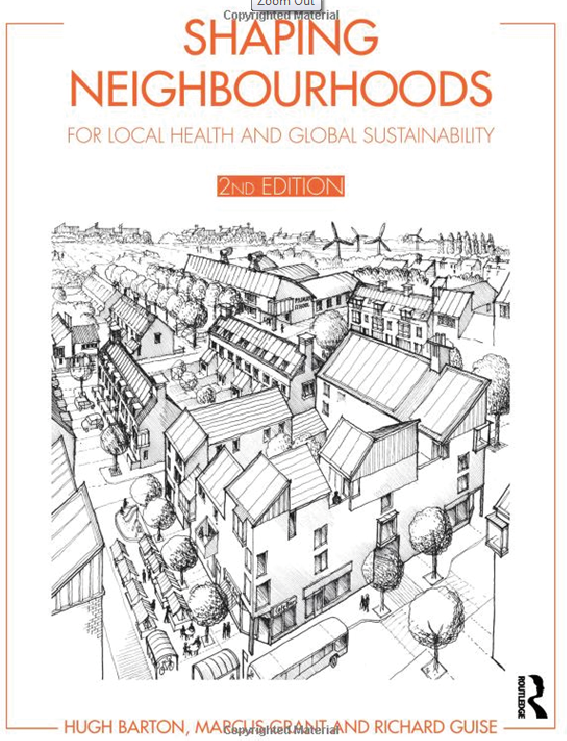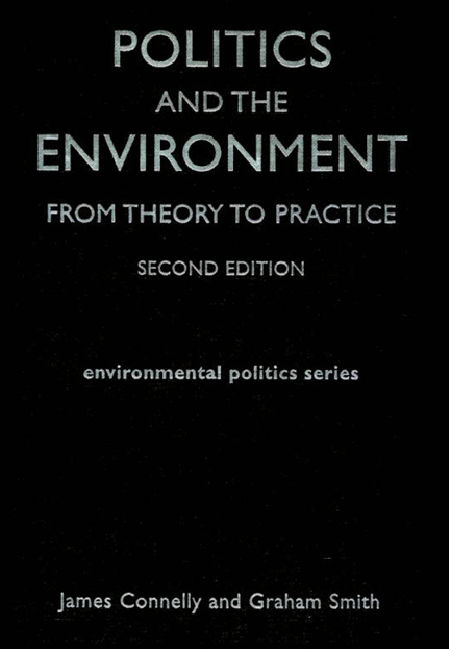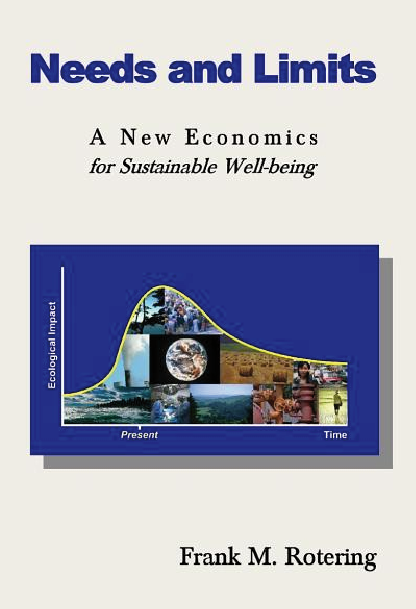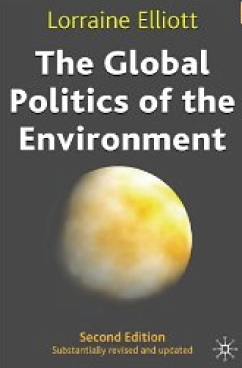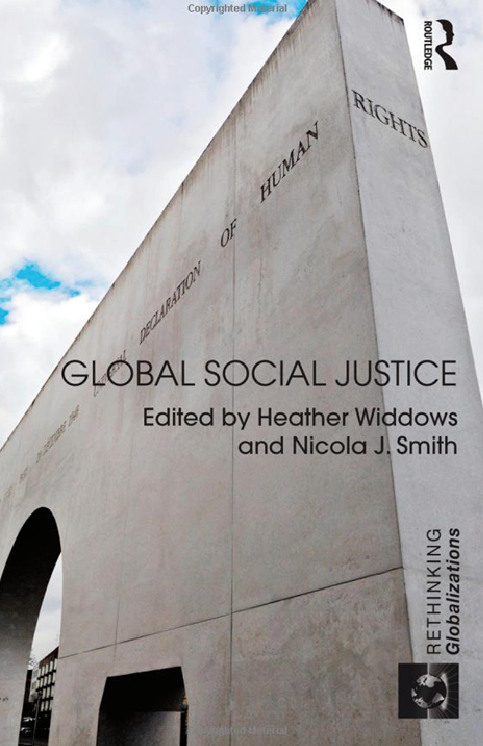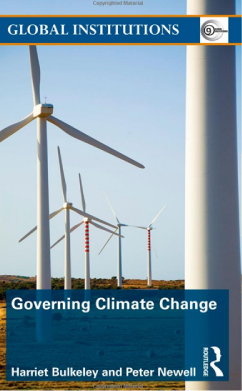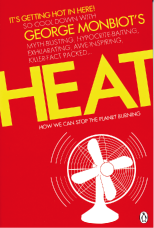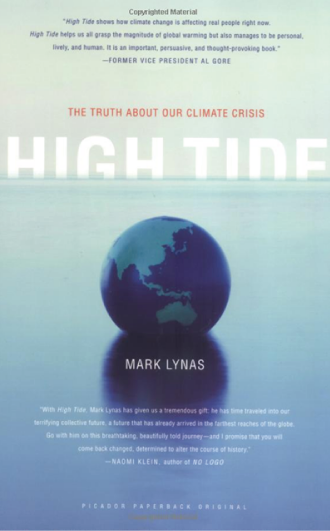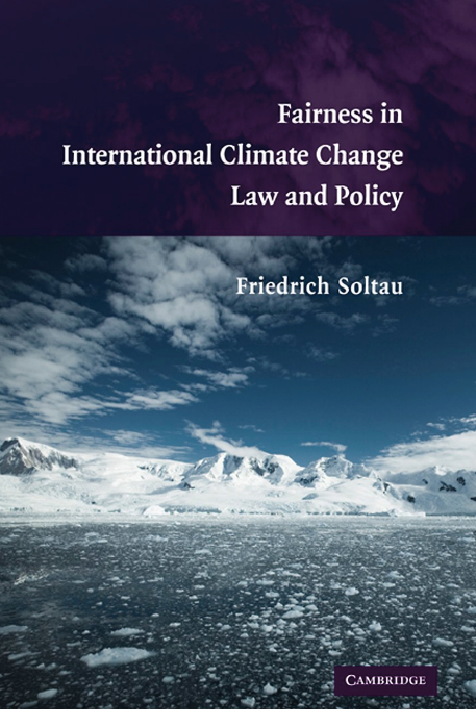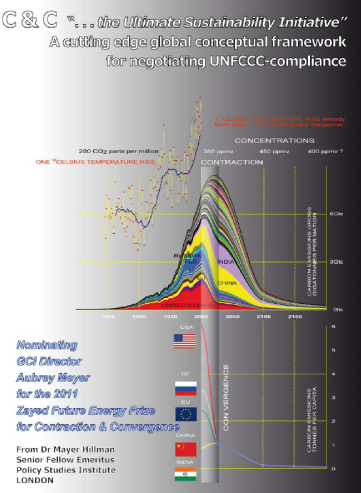Equity Fairness Support for the C&C Principle
For the C&C approach to become operational, the signatories to the UNFCCC must agree on a safe concentration of atmospheric GHGs, the proportional allocation of this limited capacity based on national populations, the fair assessment of current levels of emissions, targets for contraction of those national emissions that exceed allocations4 and the concurrent temporary increase in emissions for those countries which have not utilized their full allocation – an enormous undertaking that has thus far been elusive (Bows & Anderson, 2008).5 Nevertheless, the proponents of the C&C approach argue that it can provide an equitable and just response to the climate change challenge that can win the support of the developing world since it both protects their ability to develop and obligates the developed world to reduce its excess emissions (Global Commons Institute 2008). They further argue that the date of convergence should be realized as soon as possible since the most vulnerable and least responsible for climate change are currently bearing a disproportionate and unjust burden created by those who have utilized more than their fair share of the atmospheric commons, and justice demands that this be resolved as soon as possible.
Ethical Response to Climate Change Dennis Patrick O’Hara and Alan Abelsohn|
ETHICS & THE ENVIRONMENT, 16(1) 2011 ISSN: 1085-6633 ©Indiana University Press All rights of reproduction in any form reserved.
Direct all correspondence to: Journals Manager, Indiana University Press, 601 N. Morton St., Bloomington, IN 47404 USA iuporder@indiana.edu
Contraction and Convergence is the major proposal based on egalitarianism. Developed by the Global Commons Institute, it proposes that all countries should move, over a period of time, towards equal per capita emissions, with total emission levels contracting and per capita emissions converging at a safe level. The model is flexible as to the time-frame and final emission level and potentially allows national circumstances to be taken into account.
Climate Policy
Elsevier
“The Heads of State or Government affirmed that every citizen of this planet must have an equal share of the planetary atmospheric space. In this context, they endorsed the convergence of per capita emissions of developing and developed countries on an equitable basis for tackling climate change.”
Fifteenth Summit South Asian Association for Regional Cooperation (SAARC)
Colombo, Sri Lanka - August 2-3, 2008
Contraction and Convergence is a very powerful idea and we are moving remorselessly towards it.
Michael Meacher UK Environment Minister [1997 - 2003]
Raul Estrada - Chairman Kyoto Protocol Negotiations
Intergovernmental Panel on Climate Change [IPCC]
Contraction and Convergence [C&C] - See http://www.gci.org.uk
"Long before the end of the Framework Convention negotiation, the Global Commons Institute (GCI) has presented a proposal on contraction and convergence, aimed to reach equality in emissions per capita. We all in this room know the GCI model where contraction is achieved after all governments, for precautionary reasons, collectively agree to be bound by a target of global GHG emissions, making it possible to calculate the diminishing amount of greenhouse gases that the world can release each year in the coming century, subject to annual scientific and political review. The convergence part of the proposal means that each year's global emissions budget gets shared out among the nations of the world so that every country converges on the same allocation per inhabitant by an agreed date. Countries unable to manage within their shares would, be able to buy the unused parts of the allocations of other countries. The entitlement of rights transferred in this trading is legitimised by the per inhabitant criteria. Level of contraction and timing of convergence should be negotiated on the basis of the precautionary principle. Suggestions for emission reductions are well known and convergence should be achieved at medium term to satisfy legitimacy. I have read that the Chairman of IPCC’s WG I, Sir John Houghton, has said that this is the logical approach. Analysis of C&C in TAR is a must if equity is going to be taken into account in the report."
Proceedings 2nd IPCC Expert Meeting on
Development, Sustainability and Equity
Havana, Cuba 23-25 February 2000
[1] There must be limits on all GHGs if the danger to our climate is to be averted. The IPCC scientific assessment report provides us with the basis for global consensus on such limits. The contrary view therefore does not enjoy much emotional, political or indeed scientific support.
[2] A globally agreed ceiling of GHG emissions can only be achieved by adopting the principle of per capita emissions rights that fully take into account the reality of population growth and the principle of differentiation.
[3] Achievement of a safe limit to global GHG emissions can be achieved by reducing the emissions of Annex One while at the same time ensuring that there is controlled growth of future emissions from Non-Annex One countries, reflecting our legitimate right to sustainable economic growth.
We strongly believe that this will take us along a path to responsible climate management that allows us to reach our goal of defining a mutually agreed point of convergence and sustainable development. Such a convergence Mr. Chairman must ensure that we maintain a global ceiling on emissions to prevent dangerous interference with the climate system.
[4] When we look at time frames, we believe that insufficient commitment by Annex One countries will only result in delaying our influence on the climate system. If this course is maintained, then we will all suffer and the burden will be even greater for humanity in general. The burden for any future mitigation efforts on those of who have not been historically and currently responsible for creating the problem will be greater.
AFRICA GROUP OF NATIONS POSITION STATEMENT
TO THE UN CLIMATE NEGOTIATIONS, AUGUST 1997 AGBM
The workshop sought to galvanize urgent international support and action for the concept of the Contraction and Convergence policy framework proposed to the United Nations Convention on Climate Change by the Global Commons Institute (GCI) since 1990. The African Group of Nations had proposed during the UNFCCC – COP 3 that a “globally agreed ceiling of GHG emissions can only be achieved by adopting the principle of per capita emissions rights that fully take into account the reality of population growth and the principle of differentiation”. The way forward for East African legislators was envisaged as calling for the UNFCCC secretariat to study, evaluate and assess the concept of Contraction and Convergence, and at the same time set the stage for building a global community to support the concept as it added value to the Kyoto Protocol and also encompassed the major principles in the Climate Change Convention such as the Precautionary principle, Polluter Pay principle and the Equity principle.
C&C - the Equity Principle
Proceedings of the Workshop on Dialogue with East African
Legislators on Climate Change and Sustainable Developement Issues
Nairobi Safari Park - KENYA; 23-24 April 2004
It is more equitable and fair to consider the per capita emission concept and data. This is because some countries have large total emissions mainly because of their huge population sizes, and not because of the emission intensity. The principle of “contraction and convergence” would be equitable and thus more capable of winning support by more people. In this principle, the world as a whole has to contract or reduce its total emissions. In doing so, an equitable principle is used. Take the total maximum emission level that is sustainable, i.e. that the world is able environmentally to sustain. Divide this total by the world’s population. That level of emission per capita could be considered the “emission right” or “emission entitlement” per person.
Martin Khor
Director Third World Network - August 2007
To the Special UN General Assembly Session on Climate Change
Contraction and convergence
Since the principle of ‘contraction and convergence’ was first proposed by the Global Commons Institute in 2000, it has been widely embraced by some industrialised countries. Under contraction and convergence, each country will start out with emission entitlements equal to its current real emissions levels, and then, over time, converge to equal its per capita entitlements, while the overall global budget contracts to accommodate the emissions reduction objective. The convergence principle should be applied immediately rather than later as the ‘converged point’ in the future. ‘Real emissions’ is a different concept to ‘emissions entitlement’. A country’s high/low per capita real emissions cannot justify its high/low emission entitlements. In the process of convergence, the rights and interests of country B are really infringed by country A. In the NEA-based solution, the concept of convergence can still be incorporated, but it now merely means ‘convergence of real emissions’ rather than ‘convergence of emission entitlements’. Each country’s gaps between its emission entitlements and real emissions need to be balanced by the traded emissions quotas.
Greenhouse gas emissions reduction - a theoretical framework and global solution
Development Research Centre of the State Council People’s Republic of China 2009
"High Level Dialogue on Climate Change" on C&C
“The framework of contraction and convergence provides a flexible methodology to address the problem of allocation of emission rights. The contraction of overall world emissions pursued along with the convergence of countries’ average per capita emissions, allows developing countries to partake of the carbon budget. The per capita entitlements approach is an effective one in that it takes into account historical responsibility and is based on the egalitarian distribution of the commons, within which international justice positions of causal responsibility such as the ‘polluter pays principle,’ come in."
Ursula Schäefer-Preuss
Vice President of ADB.
Haruhiko Kuroda
President and Chair ADB Board.
Ban Ki-moon
Secretary General of the United Nations.
Rajendra Pachauri
Director of TERI, Chair IPCC.
Yvo de Boer
Former Executive Secretary UNFCCC.
Gloria Macapagal Arroyo
President Philippines.
Zhou Dadi
Chief advisor national energy strategy, People’s Republic of China.
Full Signatory List
AN EQUITABLE SOLUTION: AN ETHICAL ISSUE
To discourage free riding during the negotiation period and beyond, we suggest that countries are accountable for their own emissions for a specific period, say after 1990 or 2000. That is whatever decisions are arrived at, will be applicable retroactively from say 2000. That is, the clock starts ticking and all emissions are cumulated for each country even during negotiations. This way, negotiations will conclude faster and policy actions to reduce emissions will begin soon. Regardless of the outcome of the negotiations, these emissions will be shown against each country and that much less will be available to them in future. This way, the countries taking actions in advance get their rewards and procrastinating countries will have to do more later. The only fair allocation of the global environ-mental space is on per capita basis. The desirability of distributing permits (quotas) on per capita basis is recognized at least in the long run (Manne and Richels, 1993). The belief that 'all men are created equal' was voiced eloquently in the US Declaration of Independence and was a message 'heard around the world'. If the population is fixed in the year in which the agreement is reached, the South does not benefit from population growth in future.
Climate Change and India; Issues Concerns and Opportunities [October 2002]
P R Shukla, S K Sharma and P V Ramana
Enabling the Full, Effective, And Sustained Implementation of the Convention
through Long-Term Cooperative Action Now, Up To, and Beyond 2012
One task of the AWG-LCA is to frankly and openly discuss how to guarantee continued economic
development while also achieving the necessary sharp global cuts. In this regard, the concept of contraction and convergence, supported by adequate financing, technology and capacity building and compensation for lost development opportunity, remains an option for our consideration within these negotiations. This approach provides one option for balancing the effort by developing countries to secure their development needs while reducing GHG emissions over time. As countries secure their development objectives, they are better equipped to adapt to climate change and mitigate without detrimental impacts on their societies.
Submission for the Ad-Hoc Working Group on Long-Term Cooperative Action (AWG-LCA)
ARGENTINA September 2008
"When we ask the opinions of people from all circles, in particular the scientists think that the emissions standard should be formulated on a per capita basis."
Song Jian State Population and Climate Councillor CHINA
Immediately Pre-Kyoto COP-3 - November 1997
Key Recommendations
In light of the growing human impact of climate change and the pressures of this crisis for humanitarian and development work, the following is a list of key recommendations made by the different discussion groups at the 2009 Forum.
Climate vulnerable coalition
Those nations most vulnerable to the impacts of climate change should form a common front in order to increase awareness on the impact and risks of climate change, share expertise relating to climate change policy, and influence the development of safe and equitable international climate change policy, in particular with the strongest possible impact on the 2009 UN Climate Conference at Copenhagen
Future international climate change agreement
1. The principle of contraction and convergence with a population base year should provide the basis framework for global greenhouse gas emission reductions
2. “No deal is better than a bad deal”: it would be more constructive to avoid conclusion at the 2009 UN Climate Conference at Copenhagen of any climate change agreement that would not provide for basic levels of safety, equity and predictability
3. All parts of civil society should make a concerted attempt to create wide multi-stakeholder partnerships for concentrating pressure for a successful conclusion to the Bali Road Map and the Copenhagen Conference."
2009 Global Humanitarian Forum
Human Impact of Climate Change
It is clear, given the enormity of the challenge, that the worst of climate change can only averted if the world can make a rapid transition to a non-carbon energy economy. The nations of the world would then have almost unlimited environmental space at least in the foreseeable future to use energy for their economic growth. The world needs an international mechanism that not only provides incentives to all nations to live within their entitled amounts but also helps to promote a rapid transition to a non-carbon energy economy. The principles of contraction and convergence-- the rich to reduce, while the poor to grow--and equal per capita entitlements--living within limits--would be the basis of future global agreement.
What equals effective
Down to Earth December 15th 2007
The UK Climate Change Act target of an 80% reduction in CO2 by 2050 and the London Climate Change Action Plan target of a 60% cut by 2025 are both based on a ‘contraction and convergence’ model in which by 2050 everyone in the world would be entitled to an equal share of emissions with the aim of atmospheric CO2 concentrations not exceeding 450ppm. This entitlement is roughly equivalent to two tonnes of CO2 per person each year. As UK and London emissions are currently much higher than this (whether calculated on a production or consumption basis), the targets are based on the reductions needed to achieve an equitable level by 2050.
Capital Consumption - Bioregional
the transition to sustainable consumption and production in London
"Let us recognize that a global deal has to be fully inclusive, demonstrate how we calculate burden-sharing and be equitable as no-one will accept a deal that builds in their disadvantage. That framework is Contraction and Convergence."
Too Little, Too Late: The Politics of Climate Change
Colin Challen - Former Chair UK HoC All Party [2008] Parliamentary Group on Climate Change
This DVD was produced on behalf of the UK House of Commons All Party Parliamentary Climate Change Group of MPs (APPCCG) by GCI and Tangent Films. It was distributed to all sitting UK MPs in 2007. It points to the disciplined approach we need to address climate change. Not an approach based on wishful thinking, but a rational framework which leads to the solution foreshadowed in the original 1990 United Nations Framework Convention on Climate Change (UNFCCC), and subsequently much ignored.
The UNFCCC called on all countries to recognise their equal but differentiated responsibilities to cut carbon emissions, and to recognise that the eventual equitable distribution of carbon rights had to be achieved. Over 180 countries signed up to the UNFCCC's aims, but have so far failed to deliver the action necessary to achieve them. Time is now running desperately short. We need to implement the framework known as Contraction & Convergence (C&C), as proposed by the Global Commons Institute (GCI), in order to prevent further delay or sub-standard measures which might fool us into believing that we're dealing with climate change, when we're not.
This DVD gives an explanation of C&C. Experts also explain why they support C&C and Aubrey Meyer, whose work in developing C&C has been recognised in awards from the Schumacher Society and the City of London. He presents a risk analysis to show how C&C can react to stabilise the amount of C02 in the atmosphere as natural carbon sinks begin to fail. For more information, please follow these links
Thanks to our contributors: Sir Crispin Tickell, Grace Akumu, Alex Evans, Prof. Bill McGuire, Chris Mottershead, Jon Snow, Prof. Michael Mainelli, Prof Paul Jowitt, Dr. Julian Salt, Mark Lynas, Jack Pringle, David Wasdel, Dr. Andrew Dlugolecki, Dr. Robin Stott, Angela Mawle, Lorna Walker, Jeffrey Newman, Fred Pearce, Dr. Joshua Wairoto, Dr Mayer Hillman.
COLIN CHALLEN MP, Chair APPCCG
Contraction and Convergence - An Incontestable Truth [1]
The Irreducible REsponse to Climate Change [2]
Most scientists agree that human-made emissions of greenhouse gases, such as carbon dioxide, methane and nitrous oxide, have to be reduced signifiantly. The North is the main emitter of these gases and should make the most cuts. Many Southern countries argue that emission targets should be set on a per capita basis within a framework of “contraction and convergence”: per capita emissions should converge globally to an agreed ceiling, allowing emissions of developing countries to increase and those of developed countries to contract. Accepting this framework may enable an equitable long-term agreement to be negotiated: one that meets developing countries’ demands for fairness; accepts the need for eventual limits on developing countries’ emissions; and meets the prerequisite for an effective, long-term international agreement to avoid dangerous climatic change.
Climate and Equity after Kyoto - Corner House Briefing 03
Aubrey Meyer and Nicholas Hildyard 1997
"As with all great ideas, C&C is deceptively simple, addresses the root causes of the problem, and is recognized as a grave threat to those vested interests who fear the climate change problem’s successful resolution because of the fundamental changes it will wrought on our economic status quo. The sustained effort of GCI over 20 years is a testimony to Aubrey's integrity, commitment, and resolve. The logic and calculus of C&C is inescapable once an objective analysis is undertaken. For years, it was foolishly dismissed as impractical! Somewhat ironically, those who now view the problem with a clear head are increasingly accepting that C&C presents the only politically acceptable solution to the foundational question of how the permissible emissions can be distributed amongst the people of Earth."
Professor Brendan Mackey Australia National University
Winning the Struggle Against Global Warming
What Will It Take? The Earth Charter Global Dialogue on Ethics and Climate Change
Brendan Mackey and Song Li
Protecting Life from Climate Change
The need for synergies between Policy, Ethics, and Education - David Chalmers
Contraction and Convergence
Capping greenhouse gas emissions globally is indispensable for maintaining the integrity of life on the planet. Sixty percent in six decades is roughly the order of magnitude contraction requires. However, the Kyoto Protocol so far fails to live up to this challenge. It does not demand serious reductions from the North, and does not include newly industrializing countries from the South. Nevertheless, for the second commitment period of the Kyoto process, an ecological breakthrough cannot be reasonably expected unless the South assumes commitments as well. Otherwise, the North will stall, and, more importantly, the steep rise in emission levels in the South will continue unchecked. At this point, the issue of equity will reveal itself as the major bottleneck for any serious progress in climate protection. On the one side, the South will refuse obligations before the North follows through on its responsibility, while on the other side the North will not be forthcoming before commitments for the South are defined. Unless the reduction commitments of the North and those of the South are balanced out in fairness, no real climate protection will happen. Only a framework that respects the principle of equal per capita right to the resources of this Earth will eventually hold up to equity and fairness. Any other allocation scheme (”grandfathering”, ”cost-base ”) would repeat a colonial constellation of granting disproportionate shares to the North. If the use of the commons has to be restrained through common rules, it would violate the principle of equity to design these rules to the advantage of some and the disadvantage of many. The equal right of all world citizens to the atmospheric commons is therefore the cornerstone of any viable climate regime. Therefore, for the second commitment period of the Kyoto Protocol, a process allocating emission allowances based on per capita equal rights to each country, has to be initiated. This is hard on the North, but not unfair as in exchange for accepting the rule of egalitarianism in the present, industrial countries would not be held liable for emissions accumulated in the past. It is from this right to atmospheric commons that all countries (and all classes) in the long run converge in their trajectories upon a similar level of fossil energy use per capita. The North contracts downwards, and the South converges upwards. Over-users will have to climb down from the present level, while under-users are permitted to raise their present level, albeit at a gradient that is much less than the one industrial countries went through historically, levelling off at the point of convergence. However, the convergence of North and South on equal emission levels cannot be achieved at the expense of contraction, i.e. the transition to globally sustainable levels of emissions. Once again, sustainability gives shape to equity. The vision of ”contraction and convergence” combines ecology and equity most elegantly; it starts with the insight that the global environmental space is finite and attempts to fairly share its permissible use among all world citizens taking into account the future generations as well.
The Jo'burg Memo
Heinrich Boell Foundation
There are also other ideas and models that can help us think differently and challenge conventional thinking. Perhaps one of the most significant is the concept of "contraction and convergence‟ developed by Aubrey Meyer of the Global Commons Institute, in response to the threat of runaway climate change (Meyer 2000). Meyer notes that the whole world needs a contraction in the production of carbon dioxide - an output of increased industrialisation and economic growth. Rich and poor nations must eventually converge in their carbon production, to avoid catastrophe. Less developed nations must be allowed to develop – so their carbon use goes up - whilst industrialized and post industrial nations must make substantial reductions.
OXFAM Briefing - Well-Being in Consumer Culture and the New Poor
Sandra Carlisle and Philip Hanlon
Carrying Capacity and Ecological Limits - Living within the carrying capacity of the Earth, recognition of the achievement of basic needs and livelihoods within ecological limits, and a move away from economic expansion, especially in developed nations, under a framework of contraction and convergence guaranteeing geopolitical stability. This policy recommendation was put forward in relation to the Green Economy in the context of Sustainable Development and Poverty Eradication for the Earth Summit 2012 by One Earth, Stakeholder Forum and EPF.
Green Economy
In the Context of Sustainable Development and Poverty Eradication
"We assume that the UK progressively reduces its carbon footprint so that it uses only its fair share of total global carbon emissions under the given, interim target, making sure that other countries, particularly developing countries, have space to develop and make their own transition to a sustainable future. We assume a global ‘deal’ based on ‘contraction and convergence’ to limit, reduce and maintain total global emissions within defined limits (the contraction); we also assume that the UK’s total share of emissions progressively comes into line with its fair global share (the ‘convergence’), with significant transfer payments to developing countries during the process to facilitate their sustainable development. [In 1997] "Robin Cook's initiative, which was jointly agreed with John Prescott's Department of the Environment, represented one possible way to get the developing world and, by implication, the US, on board the climate train. However, it is not the only way or, for that matter, the sustainable way. Environmentalist Aubrey Meyer believes that he has a more comprehensive 'world-saving idea' that could really cut the Gordian knot of international climate negotiations. Under the auspices of the Global Commons Institute, the London-based lobbying group he helped to set up with friends from the Green Party in 1990, Meyer has been promoting a simple and powerful concept which has already had a major impact on senior politicians and negotiators. GCI's eye-catching computer graphics illustrate past emissions and future allocation of emissions by country, achieving per capita equality by 2030, for example. After this date, emissions drop off to reach safe levels by 2100. This so-called 'contraction and convergence' in emissions has gathered the support of a majority of the world's countries, including China and India. It may be the only approach that developing countries are willing to accept."
Private Planet
David Cromwell
The equitable vision of "contraction and convergence," where all countries have the same carbon emission rights per person and everyone continues to get richer, especially in developing countries, could head for carbon reductions around 90% over the next century. Could that grand vision of a richer, fairer, cooler, and safer world actually be feasible and profitable?
ASAHI GLASS Blue Planet Lecture
Amory Lovins 2007
"Looking further ahead, there is a democratic, transparent, and simple form of international agreement that might one day replace Kyoto. Known as Contraction and Convergence (C&C) it has been championed by UK politician Aubrey Meyer for over a decade. In some ways C&C is an ultrademocratic variant of the Kyoto Protocol, for at its heart is the simple idea that the only equitable way to reduce emissions is to grant every human being an equal "right to pollute" with greenhouse gases . As with Kyoto, this right could be traded, though under C&C the volume of trade is likely to be far larger than under Kyoto. When facing a grave emergency, it’s best to be single-minded."
The Weather Makers
Tim Flannery on C&C
"Within a few years the principle of 'contraction and convergence' (C&C) emerged. From the talented hand of Aubrey Meyer a violinist turned environmental campaigner, came a policy intended to curb the worst effects of global warming. Contraction means lessening the use of fossil fuels and all activities that contribute to the pollution that leads to climate change. Convergence is the ethic of sharing. When it comes to Earth's resources, the wealthy northern hemisphere countries have developed the habit of gobbling up oil while the countries of the southern hemisphere are largely sparing in their use of 'black gold'. North and south have diverged. Meyer believes everyone in the world is entitled to the same share of those precious resources. He has come up with a common-sense one-size-fits-all formula that will ensure it is so. It is the element of social justice in C&C that was an appealing shift in thinking."
"The Converging World"
John Pontin
"The most prominent proposal is that of ‘contraction and convergence’ [GCI] Under this model, global emissions would be reduced over time, and entitlements to emit would be proportional to population for each country after a transition period—a convergence towards equal per capita allocations across the globe. The underlying ethical position is that each human being has an equal right to the atmosphere, and if access to the atmosphere as a repository for greenhouse gases has to be rationed, then each person should be entitled to an equal share. Industrialized countries would be allocated many fewer permits than their current emissions, and thus have to buy permits from developing countries. India and other developing countries with low per capita emissions are supporting the concept of equal per capita emissions rights, but others with relatively high emissions intensity (such as South Africa) would be unlikely to support this allocation rule. To agree on equity models such as contraction and convergence would thus require a fundamental rethink in rich societies about what their fair share of global resources and the global environment is, to acknowledge that they have been using a far greater share than is rightfully theirs and to drastically reduce their claim on global resources."
Developing Countries and the Future of the Kyoto Protocol
FRANK JOTZO (Australian National University)
Solution - Contraction and Convergence - first advocated in 1990 by Aubrey Meyer.
“Long-term convergence of per capita emissions is . . . the only equitable basis for a global compact on climate change.” Prime Minister India, Manmohan Singh, 30 June 2008
Professor Mike Hulme UEA
CIBSE Annual Lecture 2011
The idea of Contraction and Convergence (C&C) was first advocated in 1990 by Aubrey Meyer, a UK-based South African musician, author and founder of the Global Commons Institute. It offers a straight-forward framework for an international agreement on climate change, the basic principle of which states that all citizens of the world have an equal right in principle to emit greenhouse gases. This right would be granted by a specified future date, the flat individual allowance for each citizen to be derived from an agreed eventual global greenhouse gas concentration target (often claimed by Meyer and others to be around 450 ppm). The C&C strategy consists of reducing global emiss ions of greenhouse gases to secure this target level (i.e. 'contraction'); a goal reached because every country brings its emissions per capita to a level which is eventually equal for all countries (i.e. 'convergence'). Initially, these entitlements would reflect the current distribution of emissions across nations, but would eventually converge by a date to be agreed through negotiation (often suggested to be 2050). In order to meet these per capita targets, nations would be entitled to trade allowances, thus facilitating financial transfers from higher-emitting nations to lower-emitting ones.
Why We Disagree About Climate Change
MIke Hulme
“Contraction and Convergence’, has 3 main components: -
- each person on the planet is granted an equal right to emit carbon by virtue of their equal right to use the benefits provided by a shared atmosphere. This principle is treated as intrinsic to the architecture of the approach and not a longer-term aspiration as in the case of Kyoto Plus.
- a ‘global ceiling ‘ for greenhouse emissions is set based on a calculation of the amount the global environment can withstand without dangerous climate change taking place.
- each country is allocated a yearly ‘carbon emissions budget ‘ consistent with the global ceiling not being exceeded, and calculated according to each country’s population size relative to an agreed base year. The name of the approach comes from the notion that over time, it aims to bring about a stabilisation, and later a contraction, in global greenhouse emissions so that they stay below a safe level; and that, in the longer term, developed and developing countries will converge on a roughly equal level of per capita emissions.
Within this overall approach, a country that wants to emit more than its yearly quota must buy credits from countries that have spare capacity. The country selling the credits is then free to invest the receipts in activities enabling it to develop sustainably. An emissions mechanism is a key feature of all of the proposed successors to Kyoto, but in this version the trading zone covers the whole planet from the outset. The consequence is that Contraction and Convergence offers a unique mixture of equity and flexibility which does not seek a literal convergence in greenhouse emissions, but rather a convergence in the rights of all countries to make use of the atmospheric commons. Unlike a number of competing approaches, Contraction and Convergence, if fully implemented and complied with, could be expected to reduce the risks of dangerous climate change substantially, although it will not prevent many adverse impacts in the short to medium-term. It also has the merit that it adopts emissions targets based on scientific criteria for protecting inequalities between developing and developed countries, and between generations, relative to its rivals. It will also tend to improve, relative to rival approaches, the position of the worst off since research suggests strongly that very many of the worst off will be members of developing countries in a future world blighted by climate change. Finally, it will be attractive to those who wish to bring as many people as possible to the point where they have enough since the measures it will introduce will benefit many millions of people in developed and developing countries who lead, or will lead, lives lacking in what is needed for a decent life without bringing more than a very limited number of people below the sufficiency level."
"Contraction and Convergence - the Global Solution to Climate Change" -
Aubrey Meyer Green Books. C&C was pioneered by the Global Commons Institute
Climate Change, Justice and Future Generations
Edward Page
Civil society organizations are beginning to make the crucial links between global warming, poverty and sustainable development, but struggle to fit climate change into their existing schemas of perpetrators and victims, donors and beneficiaries, global problems and activist solutions. Protection of the atmos-pheric global commons is a challenge of accountability. The development and adoption of energy efficient, low-emission technologies is of course critical. But it is equally urgent that new policies and institutions are able to make the link between socioeconomic development and global warming and then transit from blueprint to implementation. There are many proposals already on the table: Some countries, and many campaigners support a policy of ‘contraction and convergence’ towards sustainable and equitable per person emission quotas globally.
What Assures Consumers on Climate Change? Switching on Citizen Power
Accountability & Consumers International - The global voice for consumers
Die soziale Frage und der Lebensstil - Was die Wachstumskritiker in den siebziger Jahren nicht in der notwendigen Klarheit gesehen haben, ist die soziale Frage. Sie kritisierten vor allem »Überkonsum« im reichen Norden und »Überbevölkerung« im armen Süden. Heute kann sich die politische Diskussion eine solche soziale Leerstelle nicht mehr leisten. Innergesellschaftliche und zwischengesellschaftliche Gerechtigkeit müssen integral in umweltpolitische Konzepte aufgenommen werden. Dabei dürfte in den internationalen Beziehungen ein neues Leitbild an Bedeutung gewinnen – Contract and Converge Die Industrieländer müssen mit Pro-Kopf-Emissionen und -Ressourcenverbräuchen herunter, während den Entwicklungsländern noch ein moderates Wachstum derselben zugestanden wird, bis man auf einem globalen naturverträglichen Niveau angekommen ist.
Grune Markwirtschaft - Beitrage zur Wirtshcaftpolitischen Debatte
bei Bundnis 90/Die Grune [German Green Party]
"The WBGU recommends that emission rights for the green-house gases covered by the Kyoto Protocol be allocated according to the ‘contraction and convergence’ [C&C] approach. The C&C model (Meyer, 2000) is based upon a fundamentally equal right of all individuals to emit. This can be derived from the human right to equal treatment, and corresponds to the principle of equity under the UNFCCC (Art. 3(1)), and thus corresponds to the egalitarian principle postulated by the Council."
"Climate Protection Strategies"
WBGU on C&C
A number of principled proposals have been advanced to help address the enormously complex political question including the Contraction and Convergence approach of GCI. In such proposals emissions are normally calculated on a per capita basis to draw attention to the underlying inequities in historical and current patterns of global consumption.
The Social Dimensions of Climate Change
Robert Mearns and Andrew Morton - World Bank
Contraction and Convergence
"One of the key issues underlying all post-Kyoto debate is how to make any international approach equitable. In 1990, Aubrey Meyer, at the Global Commons Institute, proposed the original idea of contraction and convergence as a means of achieving this. The concept was adopted during the original Kyoto discussions by India and in 1997 by the Africa Group of Nations. However, it never made it through the final Kyoto negotiations. The central concept of Meyer’s proposal is that all GHG emissions should be, capped at the level nceded to prevent dangerous climate change within a framework that includes every country and that emission rights should be allocated to each country on a per capita basis."
Felicia Jackson
Conquering Carbon: Carbon Emissions, Carbon Markets and the Consumer
"Contraction and Convergence (C&C) is a global framework for reducing GHG emissions to a safe level. C&C was designed by the Global Commons Institute for the Intergovernmental Panel on Climate Change and the UN Framework Convention on Climate Change.12 Longtime industrialised countries, which have produced the bulk of greenhouse gases, bear a much larger burden in preventing climate change; therefore they will have to play a leadership role, both regarding drastic emissions reduction and development of low- or no-carbon technologies to provide room to poor developing countries for economic development within the boundaries of a global carbon regime. C&C is based on the science of limits and the principle of carbon justice, striving for convergence to equal-per-capita emissions rights, assisted by a medium-term, multistage approach accounting for differentiated national capacities. “Contraction” means global emissions are reduced in total over time so the concentration of greenhouse gas in the atmosphere stabilises at a level low enough and soon enough to prevent dangerous rates of climate change from taking hold. “Convergence” means that subject to this global limit, initial entitlements to emit carbon are distributed to all the countries or regions of the world with an agreed process of convergence to equalise per capita emissions entitlements across the planet. During contraction and convergence, entitlements are assumed to be tradable and hence must be capped, with quotas initially distributed to the government, which then auctions them to users who are allowed to re-sell them. C&C also could work using the carbon tax rather than cap and auction-and-trade."
Climate change and the energy crisis Alleviating climate change
Robert Goodland and Simon Counsell
"Without an organizing principle based on equity, it’s hard to see how any deal can be reached. Fortunately, an equitable organizing principle has been advanced: it’s known as contract and converge. Here’s how it would work. First, an overall reduction schedule would be agreed to; this is the contract part of the equation. Then, rights to the global atmospheric commons would be divided among nations in proportion to their populations—in other words, one person, one share. However, absolute propor-tionality wouldn’t kick in for a decade or two, during which time the allocation formula would converge toward proportionality. The rate of convergence would be a topic for negotiation; the goal of per capita equity would be accepted at the outset. Before and after convergence, poor and populous countries with more permits than emissions could sell their excess permits to rich and relatively underpopulated countries that are short on them. In this way, nations could pollute at different levels, with overusers of the atmosphere paying underusers for the privilege. Americans could, in other words, extend our present level of carbon use for another decade or so, but we’d have to pay poor countries to do so."
Capitalism 3
Peter Barnes
Contraction and convergence
"In order to picture which development paths might bring the world to a greater level of resource justice, it may be useful to employ the model of ‘contraction and convergence’ (Meyer 2000). This model schematically envisages two different development paths: one for industrial countries, one for developing countries. All nations of the world would adjust their use of resources so that in half a century from now they no longer overstretch the absorption and regeneration capacity of the biosphere. The model assumes no nation has the right to a disproportionate share of the global environment, so each one endeavours – though with individual variations – to achieve the common goal of material and energy consumption compatible with the demands of other countries, while remaining within the carrying capacity of the biosphere.
In the end, there is no justification for any other distribution of globally important resources; the right of all nations to self-defined, self-determined and equal development permits it only to make claims that are socially and ecologically sustainable at a global level. This is what the contraction and convergence argument inspired by Kant comes down to: institutional patterns of resource consumption should be considered unjust if they rest upon rules which cannot in principle be adopted by all other nations. Consequently, the model requires that the industrial countries contract – that is, that they reduce their consumption of resources drastically. Resource justice in the world crucially depends on whether the industrial countries are capable of retreating from overconsumption of the global environment.The example of greenhouses gases may serve to illustrate the path of shrinking resource consumption. By the middle of the century, the overconsumers must reduce by 80% to 90% the strain they put on the atmosphere by burning fossil fuels, in order to do justice to the precepts of both ecology and fairness. It goes without saying that this figure refers to the global North, i.e. the consumer class in the countries of the South is placed under the same responsibility. On the other hand, developing countries appear in the model as tracing an upward curve in resource consumption. First, poorer countries have an unquestionable right to attain at least a ‘dignity line’ of resource consumption which should apply to all citizens of the world. Without access to kerosene or biogas, without an energy and transport infrastructure, it is hard to satisfy even the basic needs of modern human life.
Moreover, each country will try to achieve different images and forms of a prosperous society – an ambition that in turn requires access to resources such as energy, materials and land. However, this upward movement ends at an upper line of ecological sustainability for all; natural limits set the framework for justice. As it happens, a number of emerging economies are already about to hit that limit in the coming decade.
The conceptual model of ‘contraction and convergence’ thus combines ecology and justice. It begins with the insight that environmental space is finite, and it ends with a fair sharing of the environment by the citizens of the world."
Rethinking Development in a Carbon-Constrained World
Edited by Eija Palosuo for Finnish Foreign Affairs
"Expansion and Divergence have characterised human use of nature throughout history. Humankind has increasingly expanded those parts of the ecosphere dominated, disrupted and destroyed by it. At the same time, levels of natural resource consumption have increasingly diverged within human societies. In response to problems emerging on this development path, the ‘Contraction and Convergence’ approach has now been postulated for the specific field of climate sustainability. This approach can in fact be applied as a general principle. An overarching environmental policy goal, it would imply reducing excessive overall levels of natural resource consumption while at the same time harmonizing per capita consumption levels worldwide. However, fundatmental structural and development circumstances - in the realms of demography, economy, technology, politics and social psychology stand in the way of realizing this concept of sustainability."
Kontraktion und Konvergenz als Leitbegriffe der Politischen Okonomie der Umwelt
Karoly Henrich
The contraction and convergence principle has gained increasing support as a method for apportioning global emissions to the national level. Under contraction and convergence, all nations work together to achieve collectively an annual contraction in emissions. Furthermore, nations converge over time towards equal per-capita allocation of emissions. Contraction and convergence is an international framework for apportioning equitably a contracting global carbon dioxide emissions budget. Within this framework, the world’s nations work together to set and achieve a global annual emissions target - contraction. In addition, nations converge towards equal per-capita emissions by an expressly defined year - convergence. By simultaneously ‘contracting and converging,’ such a policy requires all nations to impose targets from the outset.
Strategies for Airlines on Aircraft Emissions and Climate Change:
Sustainable, Long Solutions - July 2007
David Hodgkinson Alex Coram Renee Garner
"Contraction refers to the 'full-term event' in which the future global total of greenhouse gas [GHG] emissions from human sources is shrunk over time in a measured way to near zero-emissions within a specified time-frame. The example shows 90% by 2100. Calculating future emissions contraction on the basis of concentrations and sink evidence is a non-random way of responding to the objective of the UNFCCC.
Convergence refers to the full international sharing of the emissions contraction-event, where the 'emissions-entitlements' for all countries result from them converging on the declining global per capita average of emissions arising under the contraction rate chosen. Converging at a rate to be agreed - the example shows 2030 - is a non-random way of responding to the principle of 'equity' in the UNFCCC, whilst still meeting its objective." GCI
Coping with Global Environmental Change, Disasters and Security:
Threats, Challenges, Vulnerabilities and Risks
Hans Günter Brauch (Editor), Úrsula Oswald Spring (Editor), Czeslaw Mesjasz (Editor), John Grin (Editor), Patricia Kameri-Mbote (Editor), Béchir Chourou (Editor), Pál Dunay (Editor), Jörn Birkmann (Editor)
"The contraction and convergence policy option proposes that equalizing global per-capita emissions across countries would ensure equity in the global climate change mitigation process. It supports climate change negotiations that aim to equalize per-capita emissions at a future date, with the levels of permissible global per-capita emissions and the different years by which the emissions have to be equalized varying according to several formulae. This would allow citizens of all countries, regardless of size or level of development, equal space in the atmosphere, and thus equal responsibility to mitigate. While there are concerns that contraction and convergence may provide incentives to high population growth rates, it is entirely feasible, and indeed widely proposed, to place a limit on population beyond which no further entitlements would be granted. Furthermore, countries with high population growth rates would still bave to provide resources for their growing populations. Therefore, the economic incentive to encourage high population growth rates may not even exist."
Global Sustainability - A Nobel Cause on C&C
What the world urgently needs is climate justice and one of the fairest ways to make sure that happens is by adopting the idea of contraction and convergence. Put very simply, this would mean everyone on the planet having an equal right to emit equal levels of carbon dioxide and other greenhouse gases. Contraction and convergence would set a ceiling on a safe and stable amount of greenhouse gases allowed in the atmosphere and divide this by the number of people on the planet. What is good about this system is that people in poor countries who do not emit their allowance of carbon, because they use much less energy than people in rich countries, could sell their allowances to rich people who, because of their lifestyles, wanted to emit more. The result would be win, win, win! The threat of climate change would be avoided, poverty would be tackled by trading CO2 in favour of poor countries and the world would become a more equal place. To learn more about Contraction and Convergence see here.
Global Footprints
That this House welcomes the recent decision of the Synod of the Church of England to support contraction and convergence as the overarching framework to tackle climate change; further welcomes the comments of the Honourable Kalonzo Musyoka, Minister for Environment and Natural Resources, Kenya, given at a meeting for African Environment Ministers in Nairobi in February, supporting contraction and convergence; congratulates Aubrey Meyer, founder of the Global Commons Institute, which formulated the concept of contraction and convergence, on receiving the Climate Change Champion Award made by the Corporation of London, for his work in attracting the support of many government and international agencies for contraction and convergence; and calls upon the Government to seek, during its presidency of the G8, to advance the international effort to avert the dangers of climate change by promoting the constitutional framework of contraction and convergence, which embodies the principle of equal rights to the global commons. [Tabled 21.03.2005 - Total number of signatures: 168].
Early day motion 961 - G8 and CONTRACTION & CONVERGENCE
‘Contraction and Convergence’ is an exemplary global framework. It is a strategy aimed at capping and then reducing carbon dioxide emissions (contraction) and by giving an equal entitlement of the capped carbon to every adult, ensuring that all get fair shares of this capped global carbon allocation (convergence).
Climate change, poverty and war Robin Stott
JOURNAL OF THE ROYAL SOCIETY OF MEDICINE Volume 100 September 2007
Contraction and Convergence is a proposed global framework for reducing Greenhouse gas emissions to combat Climate change. Conceived by the Global Commons Institute in the early 1990s, the Contraction and Convergence strategy consists of reducing overall emissions of greenhouse gases to a safe level where the global emissions are reduced because every country brings emissions Per capita to a level which is equal for all countries. It is intended to form the basis of an international agreement which will reduce Carbon dioxide emissions to avoid Climate change, carbon dioxide being the gas that is primarily responsible for changes in the Greenhouse effect on Earth. It is expressed as a simple mathematical formula. This formula can be used as a way for the world to stabilize carbon levels at any level. Advocates of Contraction and Convergence stress that negotiations at the United Nations Framework Convention on Climate change are governed sequentially by the 'objective' of the UNFCCC followed by its organising principles. C&C is widely cited and supported www.gci.org.uk endorsements.html The "contraction" part of Contraction and Convergence model calculates the total amount of carbon being put into the atmosphere as a 'path-integral' or a total 'contraction-event'. Future global emissions will shrink over time and the shape and extent of this will depend on the final level of atmospheric carbon considered safe, subject to the changing source-sink relationship in future as future atmospheric GHG accumulation continues.
VETERINARIANS TODAY
What does “Converging World” mean?
The Converging World concept is large and complex. The converging aspect derives partly from the ‘Contraction & Convergence’ principle proposed by Aubrey Meyer of the Global Commons Institute (see Schumacher Briefing No 5), which sees, across the world, an equal per capita right to emit ‘carbon’. The Converging World idea goes beyond carbon trading, although this is a fundamental aspect requiring emergency attention. It is a vision of a world where everyone has a fair and equal share of all the resources that the Earth can easily provide without jeopardising its potential to support life in all its diversity. It is also a world where everyone has a fair and equal share of, and access to, human created resources such as knowledge. The vision extends to an indiscriminate right, and equal access, to the functions of our institutions for justice, health, education and security. In this converging worldview environmental issues are inseparable from social justice.
Go Zero - The CONVERGE Project
Contraction & Convergence is a concept for international agreement on greenhouse gas reduction. It has been gaining ground because it outlines a way to fight climate change that is fair and equitable for everyone on the planet. This YouTube video on C&C is from the film The Age of Stupid.
Connecting Manitobans to Climate Change Facts and Solutions
Cap and Trade schemes can only be linked if the countries have committed to firm emissions caps. In Europe, national emissions caps have been set in an interactive way, first for 2008-2012, and as of summer 2010, it is discussed whther to increase the level of emissions reductions for the period 2013-2020 from 20% to 30%. While deciding about targets in the EU ontext is a complex matter, the question arises how would negotiations be hedl if emissions-trading schmese were more widely linked? The answer depends upon the basis for the international negotiations on emissions targets. A veriety of approaches has been discussed. First, a country’s recent emissions can serve as a reference point for negotiations about the level of efforts to reduce emissions. Second equal emissions budgets can be defined per capita, combined with trading schemes, to allow countries with higher emissions levels to acquire some of the allowances from countries with lower emissions while they are reducing their own emissions levels. This is refined in a third option “Contraction and Convergence”, which envisages a gradual move from historic emissions levels towards equal per capita emissions budgets, for instance by 2050 [GCI].
Climate Policy after Copenhagen:
The Role of Carbon Pricing Karsten Neuhoff
Re-conceiving growth: contraction and convergence
The dominant development model, based on the unlimited meeting of consumer wants leads inexorably to overconsumption. Yet the continued physical expansion in the global reach of commodity supply systems means that consumers in developed countries continue to perceive resource flows as bountiful, and develop no sense of limits to consumption. Whether as consumers or citizens, people in industrialized economies show no awareness that production systems are ecologically flawed or constrained.In order to achieve fair shares of the global resources available, theories of growth need to be transformed to theories of contraction and convergence, to balance the increases in energy and material use that are needed to raise living conditions among the poor against contractions among the wealthy and super-rich. There is a growing interest in ideas of ‘degrowth’ (décroissance). Degrowth is a term created by radical critics of growth theory intended to make space for alternative projects as part of post-development politics. Degrowth is (like sustainability) an ethical concept of how the world needs to change. Proponents of contraction want ‘to create integrated, selfsufficient and materially responsible societies in both the North and the South’.
Re-conceiving growth builds on longstanding arguments about the need for, and feasibility of, ‘zero-growth’, notably perhaps Herman Daly’s work on ‘steady-state economics’. Back in 1977, Daly’s ‘impossibility theorem’ pointed out that a high mass-consumption economy in the US style was impossible (at least for anything other than a short period) in a world of four billion people. Since then, lockin to progressivist growth economics has if anything deepened, and so too have the risks that sustainability thinking seeks to address. The idea of a contraction-based society poses a challenge: to find alternative models for the creation of human welfare from industry, technology and nature. Poor countries need to be able to industrialize and grow to meet the welfare needs of their people, but they need a way of doing this that avoids the world-busting models of past industrialization. Rich countries need to see ways forward that maintain quality of life, while shedding the habits and structures that damage the biosphere and corner an unfair share of the resources that are needed by the world’s poor.
IUCN - Transition to Sustainability: Towards a Humane and Diverse World
S J Jeanrenaud W M Adams
Contraction and convergence
"The current state of global overshoot highlights the need for analysis and strategy to bring the human economy within the limits of the biosphere. Similar concerns about global emissions of carbon dioxide have led to a conceptual framework for reducing these emissions known as ‘contraction and convergence’. First described by the Global Commons Institute (Meyer 2000), contraction and convergence proposes a framework for stabilizing atmospheric carbon dioxide concentrations through two complementary approaches:
- Contraction. The need to reduce humanity’s CO2 emissions to a level that will result in the eventual stabilization of atmospheric carbon dioxide at an agreed-upon level (e.g. 550 ppm).
- Convergence. The need to collectively negotiate how this reduction in greenhouse gas emissions will be allocated between nations.
Since its initial debut, the contraction and convergence framework has gained increasing recognition and sponsorship from decision makers, particularly in Europe. Influential organizations such as the European Parliament have passed resolutions using contraction and convergence as a basic principle (e.g. European Parliament 1998)."
Shrink & share: Humanity’s present & future Ecological Footprint Justin Kitzes, Mathis Wackernagel, Jonathan Loh, Audrey Peller, Steven Goldfinger, Deborah Cheng, Kallin Tea
Rallying HECA's 'Heroic Energy Conservation Army' with the 'powerful vision of 'Contraction and Convergence'.
HECA Conference May 2005
Contraction & Convergence or 'C&C'
"Minimising manmade climate change is almost certainly the biggest challenge faced by humans. Some impacts are happening right now (often in parts of the world least equipped to deal with them) because of greenhouse gases already released into the atmosphere. We have to act quickly and decisively to avoid really dangerous climate effects. Developed by Aubrey Meyer of the Global Commons Institute, the Contraction and Convergence (C&C) model is a widely accepted global framework for reducing greenhouse gas emissions (GHGs) to safe levels in a socially just way. The model provides a global ‘carbon budget’ with annual reduction targets for CO2 emissions, based on levels considered safe to avert dangerous climate change. Once in the atmosphere, GHGs can take up to 200 years to decay, so to stay within safe levels we'll have to continue to reduce, or ‘contract’ emissions year-on-year, to near zero by around 2080."
Fair Shares, Fair Choice is a campaign from Charity Sustainability South West for individuals, organisations, businesses and community groups who support the principle of ‘A globally fair and safe carbon share for everyone’
An international commitment to equally sharing our right to the atmosphere, and our right to pollute it, alongside strict targets for emissions reductions, will go a long way to ensuring the viability of life on earth for future generations. The contraction and convergence mechanism works in line with the principle of sharing and provides the necessary framework for CO2 sustainability.
How to Share The World's Resources: A Proposal
Contraction and Convergence is the only fair way to guide an international process towards sustainability. It allows development for the poor while reducing emissions in the industrialised countries.The title Make Wealth History was indeed chosen as a counterpoint to Make Poverty History, to suggest that in a finite world, ending poverty would only be possible if we also ended extremes of affluence.
Make Wealth History - Because the earth can't afford our lifestyle
"The best known rights-based approach to climate change mitigation is the 'contraction-and-convergence' (C&C) framework presented by the Global Commons Institute (GCI) at the second Conference of the Parties to the UNFCCC in 1996. The idea, very briefly, was to articulate a longterm mitigation strategy that, while reducing the overall amount of GHG in use over time, would also lend toward equalising GHG emissions per person on a global scale. In such a regime, as overall global emissions dropped, the fall would be more precipitate in wealthy countries, while usage in poorer countries would continue to rise for a period in line with their greater development needs - toward convergence between rich and poor countries at some point in the future. Initially GCI abjured the term ' rights' in reference to C&C, because they regarded the atmosphere as a global commons that 'cannot be appropriated by any state or person. Today, however, GCI claims that C&C 'establishes a constitutional, global-equal-rights-based framework for the arrest of greenhouse gas emissions. This new formulation appears to be in line with a general shift toward the language of rights in the climate change arena. Whereas the 'rights' at issue in models such as C&C amount to speculative universal 'rights to emit' GHGs, with no obvious basis in human rights law, they might be framed as deriving from the 'right to development', which is mentioned somewhat obliquely in the UNFCCC. Such a derivation would depend on demonstrating that 'subsistence emissions' were in fact required to achieve basic human rights, a claim that is at least plausible. The right to development is a difficult and somewhat confusing notion. In international law, it has had, since 1986, declaratory (non-binding) status, and has been a subject of protracted and sometimes polarising discussion within the United Nations. But whatever its doctrinal status, discussion of the right to development has evolved with time, albeit rather as a space for negotiating the differing interests of different parties in the international system rather than as law in the ordinary sense. For many, particularly in countries most vulnerable to climate change, it still provides a natural hook for assessing the rights implications of climate change and the policy premises that should underlie solutions."
Human Rights and Climate Change
Stephen Humphreys
Costs of emissions reductions will adversly impact the economies of some regions more than others. Dislocating coal jobs in the poorer regions will have a greater political-economic impact than on the wealthier coastal and urban regions where the energy from coal is primarily used. As Hu (2009) argues, it is the wealthier regions that need to make the reductions first, allowing interior and western regions to continue developing while the wealthier regions taken on the burden of beginning the process of contraction and convergence across sectors. In developing a national C&C roadmap, China’s governance will require a scalar methodology of oversight resembling the approach introduced as the climate box. Ensuring that this box is tightly sealed is a difficult problem for the Government, as emissions slippage will almost certainly occur at multiple levels. Furthermore, each of these scales of governance represents an opportunity for intervention by foreign governments, non-governmental organisations, firms and other parties that have an interest in seeing China converge its CO2 output and contract towards the nations fair share of global emissions. The primary challenges facing China will be on-site compliance and accountability of climate strategies, and the developments of more robust forms of public participation to ensure that they are measurably effective.
China’s Responsibility for Climate Change:
Ethics, Fairness and Environmental Policy - Paul Harris
"A simple and transparent policy framework for reducing greenhouse gas emissions: If such a framework was implemented, then not only would it ensure that atmospheric levels of greenhouse gases were kept to within a safe level, but all of the steps suggested in the earlier chapter of this book would become the easy options, as they would for everyone else around us. The policy is called Contraction and Convergence and it was devised by the Global Commons Institute. The principle of contraction and convergence has been endorsed by governments, non-governmental organizations, environmentalists, scientists and religious leaden around the world. You can get some idea of the range of individuals and organizations that support the principle from the Global Commons Institute website. It reads like an international Who’s Who of the great and the good. In fact, according to the UK government, the only group that is not convinced about the merits of the approach is the public."
"The Energy Glut"
Ian Roberts on C&C
The wide international inequalities in greenhouse-gas emissions will need to be addressed not least because developing nations are unlikely to accept their continued existence and, if the world’s population had the same per-head emissions as, for example, the citizens of the USA, the consequences would be profound. For this reason the concept of contraction and convergence has been proposed, which aims for equal per-head emissions over time. This aim requires choosing a stabilisation target and a date for convergence in per-head emissions between countries. Stabilisation at 450 ppm CO2e and convergence by 2030, for example, would necessitate reductions of per-head emissions of 90% for many developed nations (around 95% for the USA).
Energy and Health 6, The Lancet - Policies for accelerating access to clean energy, improving health, advancing development, and mitigating climate change - Andy Haines, Kirk R Smith, Dennis Anderson, Paul R Epstein, Anthony J McMichael, Ian Roberts, Paul Wilkinson, James Woodcock, Jeremy Woods
Hypotheses are shorthand for a complex reality: they reduce a dense tangle of events to a simple but comprehensible schema. In order to picture which development paths might bring the world to a greater level of resource justice, it may be useful to employ the hypothesis of 'contraction and convergence' that developed out of research on future climate policy. It concentrates on two development paths: one for the industrial countries, one for the developing countries.
Equality - at what level?
In the 'contraction and convergence' model for the future, the world's nations adjust their use of resources so that in half a century from now they no longer overstretch the absorption and regeneration capacity of the biosphere. Since no nation has the right to a disproportionate share of the global environment, each one tries - though with individual variations - to achieve the common goal of material and energy consumption compatible with the d emands of other countries, while remaining within the load-bearing capacities of the biosphere. In the end, there is no justification for any other distribution of globally important resources; the right of all nations to a self-defined and equal development p ermits each nation only to make claims that are socially and ecologically sustainable at a global level. This is what the argument inspired by Kant comes down to: institutional patterns of resource consumption should be considered unjust if they rest upon rules which cannot in principle be adopted by all other nations. This image of the future requires that the industrial countries contract - that is, that they reduce their consumption of resources. For it strictly follows from the above premises that the overconsumers should first of all step down from their excessively high level. R eso urce justice in the world crucially depends on whether the industrial countries are capable of retreating from overconsumption of the global environment. The example of greenhouse gases may serve to illustrate the path of shrinking resource consumption. By the middle of the century, the overconsumers must reduce by 80 to 90 per cent the strain they put on the atmosphere by burning fossil fuels, in order to do justice to the precepts of both ecology and fairness. Since fossil energy at present accounts for the bulk of resource budgets in the rich countri es, it has proved useful to speak of a 'Factor 10':5 which means that by mid-century these countries will have to manage on resources ten times lower than the consumption levels of 1990 - unless viable technologies for the disposal of CO2 can be developed in the meantime. W e should remember that the consumer class in the countries of the South is placed under the same responsibility. The Factor 10 formula simply defines the order of magnitude; lower or even higher targets may be set in individual cases. Although Factor 10 refers to fossil resources, the aim is also to reduce consumption of biotic resources; the cuts may turn out be less drastic, but the limited areas of land suggest that restrictions will have to apply here too. The developing countries, for their part, appear in the model as tracing an upward curve in resource consumption. First, poorer countries have an unquestionable right to attain at least the 'dignity line' of resource consumption which should apply to all citizens of the world. Without access to kerosene or biogas, without an energy and transport infrastructure, it is hard to satisfY even the basic n eeds of human life. Moreover, each country will try to achieve different images and forms of a prosperous society - an ambition that in turn requires access to resources such as energy, materials and land. But the upward movement cannot lead to an exponential curve; it should follow a linear path and tend towards convergence with the industrial countries in a common 'target corridor'. For the ascent ends at an upper line of ecological sustainability for all; natural limits set the framework for justice. The future model of 'contraction and convergence' thus combines ecology and justice. It begins with the insight that environmental space is finite, and it ends with a fair sharing of the environment by the citizens of the world.
Fair Future
Wolfgang Sachs and Tilman Santarius
World Society for the Protection of Animals
WSPA’s Recommendations:
• The economy has to be conceptualized not as end in itself, but as instrumental to achieve a healthy environment and wellbeing for life on earth. Systematic recognition is needed of the social/ethical dimensions of sustainability, e.g. animal welfare.
• Food production needs to move away from industrial, multinational systems towards moderate- and small scale, humane models with local supply chains and markets.
• The rise of the consumption of animal proteins has to be halted by contraction and convergence, thus ensuring a fair share. If a modest increase in consumption of animal products by the poorest people in developing countries is the best way to improve their nutrition, this should be facilitated, and offset by greater reductions in consumption by those better off and better fed.
Civil Society Consultation Conducted by the UN Non-Governmental Liaison Service For the UN Secreatry-General’s High Level Panel on Global Sustainability
"That this House welcomes the recent decision of the Synod of the Church of England to support contraction and convergence as the overarching framework to tackle climate change; further welcomes the comments of the Honourable Kalonzo Musyoka, Minister for Environment and Natural Resources, Kenya, given at a meeting for African Environment Ministers in Nairobi in February, supporting contraction and convergence; congratulates Aubrey Meyer, founder of the Global Commons Institute, which formulated the concept of contraction and convergence, on receiving the Climate Change Champion Award made by the Corporation of London, for his work in attracting the support of many government and international agencies for contraction and convergence; and calls upon the Government to seek, during its presidency of the G8, to advance the international effort to avert the dangers of climate change by promoting the constitutional framework of contraction and convergence, which embodies the principle of equal rights to the global commons."
EDM 961 UK House of Commons
Signed by 168 MPs of all parties
"Policies such as Contraction & Convergence to solve global warming also require simultaneous implementation. As far as any future regulation of transnational corporations is concerned, surely it is difficult to see how any significant regulation could possibly be implemented on any basis other than globally and simultaneously."
SIMULTANEOUS POLICY
"On the question of global equity, which I have avoided in this book, the reader may want to explore the Web site of the London-based Global Commons Institute. GCI is promoting the concept of “contract and converge” as a way to resolve the dispute between rich and poor countries about how to share the global atmosphere. Under “contract and converge, the per capita emissions of the rich and poor would converge to equality over’ say fifty years. During this time, total global emissions would contract. But because poor countries per capita emissions are far below the rich countries’ (the average American emits six times as much carbon dioxide as the average Chinese person), the poor countries’ emissions would actually rise at first. Though considered a radical idea just a few years ago, contraction and convergence is slowly gaining acceptance."
"Who Owns the Sky?"
Peter Barnes
"Fortunately, the nations of the world have signed the UNFCCC – the United Nations Framework Convention on Climate Change. This commits all nations to work together in solving the global warming problem. However, national governments now need to agree on a new protocol that commits everyone to reducing the total global emissions of greenhouse gases to a safe level. But what would such a new protocol look like?The answer is called Contraction and Convergence. "C&C" is a framework that forces governments to agree on three vital questions. First, what is a safe concentration of atmospheric greenhouse gases? Is it twice the current concentration? Half the current concentration? The present concentration? Many scientists argue a safe concentration is what it was during the 1960s. The fact is that the Earth system can absorb a certain amount of greenhouse gases without causing harmful change to the climate. So once a safe concentration is agreed upon, it is then easy to calculate the total global amount of greenhouse gas that can be emitted each year. The second question C&C forces governments to answer is, 'When will the total global emissions of greenhouse gases be reduced to the amount needed to maintain atmospheric concentrations at the agreed safe level?' In 2050? 2100? Next year? The sooner the better, of course, because the longer we wait the more harm is done to people and nature and the more expensive it becomes to fix the problem. The third important question a C&C framework would force governments to reach agreement on concerns how the permissible annual amount of greenhouse gas emissions will be allocated between nations. The simplest and fairest way is to give every person an equal share. This is called a per capita allocation, and is what C&C calls for. One important feature of C&C is that it treats nations fairly. Under this framework, the emission entitlement of people in a poor country will increase relative to what it is now, while that of people in a wealthy country will decrease. This is fair because historically poor countries have not caused the global warming problem and they need to now quickly develop to eliminate poverty. However, under a new C & C-framed protocol, all countries, including developing countries, will be committed to meeting their specified national greenhouse gas targets by the agreed date.
Once a new protocol is in place based on the C&C framework, national governments can then begin the difficult and complex task of negotiating their way through the various implementation issues - that is, working out how to most efficiently and fairly reduce emissions of greenhouse gases to the agreed safe level. In his report to the UK Treasury, Nicholas Stern, former Chief Economist of the World Bank, argued that international co-operation to solve the global warming problem must cover all aspects of policy to reduce emissions including pricing, technology, the removal of behavioural barriers, as well as action on emissions from land use. C&C does not solve all these problems, but provides a framework for their negotiated solution." Details on the Contraction & Convergence framework can be found at the web site of the Global Commons Institute.
"Winning the Struggle Against Global Warming
A Report to the Earth Charter International Council"
by Brendan Mackey and Song Li
The special replacement value of the C&C approach is that the principle of precaution and equity by income (ability) and emissions (responsibility) is differentiated and the historical emissions are included.
Umwelt und Gerechtigkeit in Deutschland
Julia Schultz
The ‘Contraction and Convergence’ (C&C) approach, which also assigns, in principle, an equal per capita ‘right’ to GHG emissions to all people, and expects emissions of all countries to converge to that level by a set date, can be seen as an application of the ES approach. (Kuntsi-Reunanen and Luukkanen, 2006; Meyer, 2000; Najam, et al., 2003; Pearce, 2003). Although initially dismissed as idealistic, there are signs that its political acceptability is growing, in part because there seems to be no other way to bring countries like China and India into the fold of a global climate change regime. Many political and business leaders, including the German Chancellor Angela Merkel, have expressed support for the adoption of a global agreement based on the Contraction and Convergence model, recognising that, in global political terms, it is the most realistic basis for forging international consensus on a post-Kyoto climate change agreement (Global Commons Institute, 2008; Spiegel Online International, 2007).
Sharing the atmosphere: A proposal for an equitable and sustainable global trading scheme for greenhouse gas emissions
Ton Bührs University of Warwick
Sharing the world's future emissions "budget" (that is the level of emissions that are sustainable) equally. This type of entitlement comes from the Contraction and Convergence model. Under this approach, the world would have to agree on what would be the upper limit of atmospheric corbon concentration which can be considered acceptable, and by which year this conce ntration should be achieved, then distribute the resulting cubon budget equally between all people and establishing a per capita emissions target, or entitlement, which all countries will agree to converge on.
Crucible for survival: environmental security and justice in the Indian Ocean Region
Timothy Doyle, Melissa Risely
WHOSE ATMOSPHERE?
The IPCC low concentration scenario results in a CO2 concentration of 450 ppmv CO2 and a total greenhouse gas concentration equivalent to about double pre-industrial levels. TIlis would produce a long.term temperature increase of about 2.5·C at the present best estimate of climate sensitivity. However, it is difficult to maintain that such a target would be tolerable with respect to the human rights of considerable sections of the world population. A lower target is required. taking into account not only the aggregate cost of dimate change mitigation, but also protection of the inalienable livelihood rights of la rge numbers of world cit izens. The Climate Action Network has therefore called for a target which keeps the global mean temperature increase below 2”C above pre·industrial levels, with the temperature being reduced as rapidly as possible after the time that it peaks. Such a target is unlikely to be ‘safe”, but the probability of a large scale dangerous change would be lowered for most regions. So far, both Northern and Southern governments - apart from the Island States - have shown little interest in defining low danger emission caps in the climate negotiations. All parties disregard the fact that when it comes to capping emissions, the choice is between human rights and the need for affluence. The task of keeping the temperature rise below 2’C appears too large, and too threatening to the economic interests of consumers and corporations. In particular, it still seems to have escaped the attention of Southern countries that dimate protection is of the utmost importance for the dignity and survival of their own people. It is time they become protagonists of climate protection, because climate protection is not simply aoout crops and coral reefs, but fundamentally aoout human rights. The point of convergence of North and South on equal emission levels cannot be achieved at the expense of contraction , i.e. the transition to globally sustainable levels of emissions. Once again, sustainability gives rise to equity.Indeed, the vision of "Contraction and Convergence” combines ecology and equity most elegantly; it starts with the insight that the global environmental space is finite, and attempts to fairly share its permissible use among all world citizens. taking into account the future generations as well.
Ethical Aspects of the Converntion on Climate Change
Wolfgang Sachs
In 1990, a group of activists led by Aubrey Meyer founded the Global Commons Institute [GCI]. Its objective is to find a solution to global warming that is fair to all inhabitants of the Earth. A GCI publication, "Contraction and Convergence: A Global Solution to a Global Problem", states:
"Because everyone - regardless of status - is now increasingly vulnerable to the impacts of climate change, the rich have little choice but to share the burden of contraction fairly." The GCI presented its original agenda to the Second World Climate Conference in 1990. Later, at the urging of the IPCC, it developed a plan that is now known as "Contraction & Convergence" (C&C). The goal of C&C is to reverse the current state of affairs in which industrialized countries account for a growing share of emissions. Developing countries suffer most of the effects of global warming and the two sides cannot agree on how to so solve the problem. The Institute observed, “We consider that a failure to face and secure a global commitment of this kind will result in a perpetual stalemate in the international political process to the extent that the agreement and delivery of global abatement targets will become less and less possible."
Environmental Regulations and Global Warming Point/Counterpoint:
Issues in Contemporary American Society - Paul Ruschmann Alan Marzilli
"Contraction and Convergence" This scheme was first introduced by the NGO Global Commons Institute (GCI) in 1990 and has been refined further into what is popularly termed “contraction and convergence.” According to GCI, it is not possible to tackle the climate issue without adhering to these two key elements—contraction (environmental integrity) and convergence (equal per capita entitlements) (Meyer 2000).
"Options for Protecting the Climate"
Mark Malik Aslam WRI
Per Capita the Only Way
Support from unexpected quarters came as a welcome surprise for developing countries such as India, which have demanded that international climate change negotiations be based on the principle of equity. A report released by the UK’s Royal Commission on Environmental Pollution (RCEP) in June 2000 said that an effective, enduring and equitable climate agreement will require greenhouse gas (GHG) emission quotas to be allocated to nations on a simple and equal per capita basis. The UK government is expected to respond in writing in the form of a commentary on the report, an explanation of how existing policies and programmes can be reconciled with it and what new policies - if any - the govemmenl is considering in light of the report. So far, the UK has held a position of indifference towards the South’s demand to calculate GHG emissions on a per capita basis as each human being has an equal entitlement to the atmosphere. As a system of per capita entitlements cannot enter into force immediately, the report proposes ‘contraction and convergence’. “Initially shares are ‘as is’, that is, approximately proportionaito each country’s income”, explains Aubrey Meyer from the London-based Global Commons lnstitute, a leading advocate of this approach. ‘’Over an agreed future period of years however, all countries will converge on the same allocation per head of their population in a base year to be agreed. This means the quotas of industrialized countries fall year by year, while those of developing countries rise until all nations emit equal amounts of GHG per head (convergence)." The RCEP report proposes 2050 as the year for convergence. It will also be cut-off date for national populations, that is, further changes in acountry’s population will not affect its emissions quotas. From then on, after convergence has been achieved, the quotas of all nations would decline together at the same rate (contraction). According to the report, commentators on climate diplomacy have identified contraction and convergence as the leading contender among the various proposals for allocating emissions quotas to nations in the long run. To make an agreement based on per capita allocation quotas more feasible. The report supports emission trading between nations. Countries that wish to emit GHG in excess of their respective quotas would be able to purchase unused quotas at prices that incline other countries to emit less than their quotas.
Relevance of Environment
Narottam Gaan
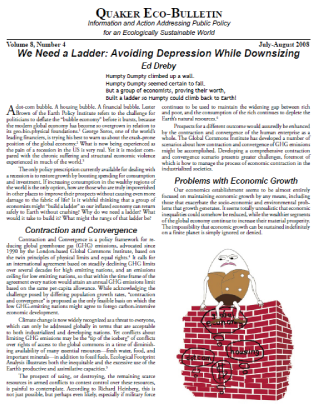
"Perhaps there would be more consideration of economic contraction by high-consuming societies if there were a collective rethinking of our economic mythology, and an effort among economists to propose both a vision and some key steps for making a transition to a smaller economic scale. There might be less fear of talking about contraction and convergence, of GHG emissions and of human enterprise as a whole, if there is a ladder for Humpty Dumpty to climb safely to Earth, where the pursuit of happiness and fulfillment can go forward without jeopardizing the future."
We Need a Ladder: Avoiding Depression While Downsizing
Ed Dreby Quaker Eco-Bulletin
"The Contraction and Convergence [C&C] plan is driven by the major concern that industrial nations, in particular the US, will devise a way of bring down the world’s aggregate arbon emissions and, at the same time, either perpetuate or more likely, intensify - the relative poverty of the developing world. In other words the countries of the North will try to achieve climatic stability on the back of the world’s poor. The premise is surely justifed historically."
Boiling Point: How Politicians, Big Oil and Coal, Journalists, and Activists Have Fueled a Climate Crisis -- And What We Can Do to Avert Disaster; Ross Gelbspan
"The best-known articulation of the idea is “contraction and convergence,” which Aubrey Meyer, director of London’s Global Commons Institute, has been tirelessly promoting for many years. The term 'contraction' refers to a reduction of global emissions from today’s unsustainable levels to future “safe” levels, while 'convergence' implies that at the same time, developing country emissions allocations would be allowed to increase in the interests of development, while rich-world allocations would drop. The result of these transitions would be a global convergence to equal, and low, per capita allotments. The contraction-and-convergence framework assumes that convergence takes place over some transition period (by, say, 2030) and that allocations are tradable, so that per capita emissions themselves may or may not actually converge."
"Dead Heat: Global Justice and Global Warming"
Tom Athansiou and Paul Baer
Contraction and Convergence
"Contraction & Convergence (C&C) principles require reductions from rich countries in order to allow developing countries to increase their emissions and economic growth, ending in convergence on a globally similar per capita level of emissions, (Meyer 2000). This alternative approach would represent a major shift from the current Kyoto Protocol approach. Instead of focusing on the question of how to share the emission, reduction burden as in the present Kyoto Protocol, this approach starts from the assumption that the atmosphere is a global common to which all are equally entitled, and focus on sharing the use of the atmosphere (resource sharing). The approach defines emissions rights on the basis of a convergence of per capita emissions under a contracting global emission profile. With this approach all parties would participate immediately after 2012 with per capita emission permits (rights) converging towards equal levels over time. More specifically, over time. all shares converge from actual proportions in emissions to shares based on the distribution of population in the convergence year."
"Carbon Markets: An International Business Guide"
Arnaud Brohé, Nick Eyre, Nicholas Howarth (Authors)
“ . . . . the longer time frame and the more broadly accepted ethical underpinnings of Contraction and Convergence [C&C] ought to make negotiations less fraught than those leading up to and subsequent to Kyoto. Is contraction and convergence pie in the sky? There is no doubt that it is a radical approach with far-reaching implications for the management of the Earth’s common resources. It would redraw the legal and ethical relationships between nations and initiate an era of supranational management of those environmental issues that cross national borders. Difficult, yes; but what is the alternative?”
"Running From The Storm"
Clive Hamilton The Australia Institute
"Clearly, any system for tackling these problems has to treat rich and poor countries differently. India, producing 1.6 tonnes of carbon per person annually, cannot be treated the same as the USA, producing 24.0 per person. Any regulatory system has to include policies for contraction and convergence or 'cap and share. Both approaches propose a year-on-year contraction in permitted emissions levels, leading to an eventual convergence on equal per capita emissions across the planet."
"The Spirit Level: Why Greater Equality Makes Societies Stronger"
Kate Pickett and Richard Wilkinson
The issue of 'equity' broadens the policy discourse by including considerations not primarily motivated by the impacts of climate change and mitigation policies on global welfare as a whole, but rather by whether climate change and mitigation policics would exacerbate existing inequalities among and within countries. This is the basis for policy strategies that seek to promote greater equity in global use of resources by allowing the emissions of developing nations to expand while overall global emissions are reduced. An important product of this is the 'contraction and convergence' approach in which the pursuit of greenhouse gas stabilization drives convergence of per capita emissions and income. This focus has led from considerations of equity towards an agenda of sustainable development.
Ethics, equity, and international negotiations on climate change edited
Luiz Pinguelli Rosa, Mohan Munasinghe
"This is a practice that will become more widespread, although whether it will ever achieve the aims of a long-running and laudable campaign by Aubrey Meyer, of the Global Commons Institute, is debatable. His idea is to allow everyone in the world an individual carbon budget. The starting point is that the average American emits 20 tonnes of carbon dioxide each year, the average European 11 tonnes, a Chinese 2.4 tonnes and an Indian just over 1 tonne. Africans produce on average even less. Aubrey's idea is a carbon allocation for the entire world, on the basis of a cut in man-made emissions of 60%. This total is then divided between countries based on the number of citizens that live in it. Over this century each country should reach its allocation. This would allow poor countries to increase their carbon output for the time being as they develop while the already industrialised countries adopt new clean technologies to reduce their carbon footprint. He calls it contraction and convergence. The idea has been widely praised as a possible way forward in inter-national negotiations but so far, for many countries, mostly the profligate emitters, it seems too tall an order."
GLOBAL WARMING The Last Chance for Change
Paul Brown
The per capita emissions and the time for adjisting to safe levels of CO2 concentration are matters to be negotiated internationally. This strategy will hopefully lead to a just and legally-binding framework for global safely and saving the world from a looming catastrophe. While some developed countries like Denmark, The Netherlands, United Kingdom and Japan have endorsed this principle of 'contraction and convergence' at the Kyoto discussions, some others like USA, who are the worst polluters, have not yet agreed to do so.
Natural Resources Management and Livelihood Security
K V Sundararaman M. Moni, Mrityunjay M. Jha
A better fairer method, which has gained wide support among scientists and policymakers, is one of Contraction and Convergence developed by the Global Commons Institute
The Impact of Climate Change:
The World’s Greatest Challenge in the Twenty-first Century
Carolyn Fry
The fact that Developing Nations have endorsed the Contraction and Convergence [C&C] suggests that it has the potential to overcome the US Senate’s stated objection.
The Global Commons Institute (GCI), which also advocates a policy by which developed and underdeveloped countries adjust their GHG emissions toward an environmentally acceptable mean, refers to this process as Contraction and Convergence (C&C).
GCI director Alex Evans explained the concept to the American research Institute the Pew Centre as follows: -“The contraction refers to a global emissions reduction trajectory designed not to exceed a specific greenhouse gas concentration in the atmosphere. The trajectory could be modified at any time in line with new data emerging from scientists, and the system thus regards precaution as its highest priority. The next question then becomes how to allocate the emissions available under this trajectory and this is the 'convergence' part: national emissions entitlements are deliberately designed to converge by an agreed data at equal per capita emission entitlements for all countries, so that emissions allowances are proportionate to population from then on."
Although McKibben focuses on the moral case for such policies, one also notes that they may prove useful as a means for persuading the governments of developing countries to accept international environmental agreements. The GCI claims that the governments of China and India already accept C&C in principle. The Africa Group and the Non-Aligned Movement have expressed support as well. Another pragmatic reason why developed nations may have to reduce their GHG emissions disproportionately is that, if developing nations ultimately refuse to curtail their emissions, others may have to compensate.
The cosmopolitan case for imposing punitive environmental measures on westerners goes beyond these practical arguments. As the previous chapter discussed, cosmopolitan theorists welcomed anthropogenic climate change as a pretext for addressing what they present as larger inequities. Ma Jun's statement that ' historic burdens have to be shouldered by those countries that have enjoyed the benefits' puts him - and by extension, McKibben - in agreement with anti-globalization activists and campaigners for ESR rights. For those who wish to exact retribution for perceived historical injustices, a system by which currently developed and currently underdeveloped countries meet the middle is not enough.
This aspect of cosmopolitan thought has sapped enthusiasm for contraction and convergence among those who might seem to be its natural supporters. C&C merely aims to equalize GHG emissions among currently developed and currently underdeveloped countries. Many reject the idea that the currently developed countries deserve equality.The GCI director laments:
"As to why contraction and convergence has rem3ined the best kept secret in international climate damage, the responsibility lies in no small part (and with great irony) with mainstream Northern environment NGOs. For forgivable but strategically flawed reasons, the international 3nns of organisations such as Greenpeace, the World Wide Fund for Nature and the World Resources Institute look a decision in the late 1980s and early 1990s to push for the principle of developed countries ‘taking a lead'; even now they can be seen defending this principle (or lack of it) tenaciously."
Evans encounters a similar insistence that the developed world take the lead from unspecified developing world governments, as well as the European Union. Careful readers of previous passages will note that McKibben both called on the developed world to accept special responsibility and called for a C&C-like meeting in the middle. McKibben does not tell readers which principle he ultimately considers more important. Since he doubts that Americans will accept equality, he may consider the point moot.
Emerging Conflicts of Principle:
International Relations and the Clash Between Cosmopolitanism and Republicanism
Thomas Kane
"Perhaps the most interesting lessons for the authors came from being involved in a very small-scale version of the type of negotiations that are taking place internationally as nations try to agree on global emission reduction targets. Although there were only five organizations involved, the negotiations mirrored the international negotiations in many ways. The participants sought an equitable distribution of the burden of climate change response, while arguing for their own special circumstances and the need for differentiation of targets to take these circumstances into account. It is interesting, though perhaps not surprising, that a contraction and convergence approach emerged as the only equitable way to provide differentiation of targets across the participants. Some authors (e.g. Garnaut 2008; Singer 2006) believe that such an approach is the only way to achieve a successful equitable outcome in international negotiations on climate change response and the ATN experience supports this conclusion. However, the key factor that allowed this approach to succeed in the ATN was the commitment of all parties to the ATN partnership and its spirit of collaboration. A similar spirit is sorely needed in international negotiations on climate change response." Contraction and Convergence - A Global Solution to a Global Problem
Universities and Climate Change
Chris Riedy and Jane Daly - Walter Leal Filho [Editor]
Exporing the inter-nation equity implications for forestry of the “contraction and convergence” principle of Kyoto i.e. where rich nations contract and poorer nations expand, until some point presumably where we all have similar ecological space.
Climate Change Mitigation by Forestry A Review of International Initiatives
Marc Stuart, Pedro Moura Costa
"I recall a conversation with leading environmental officials in China in the early 1990s in which my Chinese interlocutors stated that anthropomorphic global warming was a substantial problem that required a global response. They said then that China would accept control on levels of greenhouse emissions and be ready to join a global 'system for trading emissions rights, as long as the starting point was equal per capita initial rights. This is not an unreasonable position: but it alone would provide no basis for agreement with developed countries. What sort of principle might guide allocation of a global emissions budget across countries? To be widely accepted as being reasonable, the principles will need to be simple. ln the end, they will need to give much weight to equal per-capita rights to emissions. They will need to allow long periods for adjustment towards such positions - within the overriding requirement to stay within an environmentally responsible global emissions budget.One possible way of bringing together the latter two elements would be the 'contraction and convergence’ approach that has been discussed favourably in Germany and India and within which all countries emissions converge on an equal per capita amount at some appropriately defined future time. There will need to be headroom for emissions growth in rapidly growing developing countries within a general principle of equitable sharing of the adjustment burden. The headroom may take the form of challenging emissions intensity targets for example with emissions intensity of output falling at a rate that exceeds half of the GDP growth rate. A limit would need to be placed on the provision of headroom for rapidly growing developing countries. For example, if the ‘contraction and convergence’ approach were to be accepted as the first organizing idea and an 'emissions intensity alternative’ introduced for rapidly growing developing countries, the 'headroom' could be withdrawn at the point where the developing country rising per-capita emissions reach the (rapidly falling) per-capita emissions of standard (that is, moderate emissions developed countries (Europe, Japan, New Zealand). The principles will need to embody developed country commitment to investment in research and development and subsequent diffusion of technologies related to greenhouse gas mitigation to developing countries."
International Institutions and Economic Development in Asia
Thanh Tri Vo Editor
"If the complex process of reducing global carbon emissions is to have a fighting chance of succeeding, then it must start with a broad framework agreement, one that nations both big and small can live with. The most likely candidate is Contraction and Convergence (C&C) devised by the Global Commons Institute GCI). C&C is a science-based, global policy framework proposed to the UN since 1990 by GCI with the objective of safe and stable greenhouse gas concentrations in the atmosphere and the principles of precaution and equity. The contraction budget for global emissions will be consistent with stabilising atmospheric concentrations of greenhouse gases [GHGs] at a pre-agreed concentration maximum deemed to be safe, following IPCC WG1’s carbon cycle modelling. The international sharing of the budget as ‘entitlements’ results from a negotiable rate of linear convergence to equal shares per person globally by an agreed date within the timeline of the full-term contraction:concentrations agreement."
The ZEDbook: solutions for a shrinking world
Bill Dunster (Author), Craig Simmons (Author), Bobby Gilbert (Author)
“Contraction & Convergence is the centrepiece of our Climate Justice Project, but it’s just a framework, and won’t achieve anything unless people know about it and support it. Ultimately, our politicians have to be convinced that Contraction & Convergence is the way forward, and the Climate Justice Project is all about how we achieve this.”
The Climate Justice Project
The "Contraction and Convergence" approach (Meyer 1999) seems to be the most reliable approach to mitigate the impacts of climate change, while making the distribution of emission rights and justice possible and politically feasible.
Theorie und Praxis starker Nachhaltigkeit
Konrad Ott, Ralf Döring
"One of the possible and likely the most prominent approaches is the process of "contraction and convergence" towards equal per capita emissions. This is based upon the assumption that the world's population seeks to stabilise CO2 concentrations at 450 ppmv (a level that might prevent dangerous impacts). Annual emissions of about 2 Gt carbon by the end of next century and not more than 600 Gt cumulative carbon emissions in the period from 1990 to 2100 would be the upper limit to the worlds carbon dioxide emissions. Under the convergence approach, equal per capita emissions would guide the allocation procedure over the long-term, i.e. per capita emissions of the various countries would converge to an amount considered to be sustainable. Obviously, this scenario would demand that industrialised countries curtail emissions significantly. Yet imposing this limit would also necessitate caps on developing countries in the near future. Most developing countries perceive equal per capita emissions in the long-term as an acknowledgement of the "equity" concerns of the Convention."“Contraction and Convergence; A Global Solution to a Global Problem" GCI
The Kyoto Protocol
Herman Ott and Sebastian Oberthur
"The French approach bears a similarity to the Contraction and Convergence model promoted by Meyer (2000) which favours a transition of GHG emissions by promoting deep cuts on the part of the industrialised nations. This model views the atmosphere as a ‘global commons’ and seeks to distribute rights for its use on a per capita basis."
France on the World Stage: Nation State Strategies in the Global Era
Professor Mairi Maclean (Editor), Dr Joseph Szarka (Editor)
Contraction and Convergence (C&C) is one popular and well known policy option which assumes that the only practical and equitable way of allocating carbon is on an equal per capita basis (Meyer, 2004). It allows nations to choose their own policy path towards low emissions. This more flexible approach then creates the opportunity for lessons learnt to be adopted elsewhere and for policy efforts to be scaled up or down as appropriate. It would ensure some level of global fairness and could provide Britain the opportunity to take a global lead on local action, international climate aid and technology transfer. Once the carbon budget has been allocated between countries, governments can develop their own national policy framework, or band together with other countries to develop regional carbon cap or tax schemes.
ZERO CARBON BRITAIN 2030 A NEW ENERGY STRATEGY
The second report of the Zero Carbon Britain project
One of the most prominent for emissions allocations is the Global Commons Institute’s “contraction and convergence” approach (Meyer 2001).
Breaking the Climate Impasse with China: A Global Solution
The Harvard Project on International Climate Agreements
November 2009 Discussion Paper 09-32
It's important to note that one typically unmentioned aspect of being socially responsible is to abstain from having children or, at the most, to only conceive one child per family, especially in the developed nations. There arc already too many consumers on this planet for our collective good, and children in the North consume much more wastefully than children in the South. The U.N. Millennium Forum Declaration (2000) demanded "a world where everyone lives in a clean environment with a fair distribution of the earth's resources," This international resolution validates the concepts of "contraction and convergence" and "equitable rationing on a per capita basis" as the best way and the only fair way to allocate resources and greenhouse gas emission pennits at the global and national level relative to absolute nominal targets. This far-sighted global resolution has vitally important implications for the future treatment of global climate refugees.
Awakening to World Disorders and Climate Realities
Michael Clarke
Governments obviously have a key role in both causing and aiding solutions to Climate Change. Just as clearly, companies that are particularly damaging must change their ways and help to reduce the threat. However, we cannot rely on these institutions to do this out of goodwill: we must take action ourselves, both by pressurizing governments and companies, and by changing our own lifestyles. In the summer of 2005 a group of between 60 and 80 cyclists rode from London, England, to the site of the G8 summit in Gleneagles, Scotland. Climate change was high on the agenda for the G8 that year and the riders were joining Upsetting the Offset with 1000s of other people in Scotland to lobby, protest and demonstrate. Their concerns were diverse. Some wanted to lobby the leaders of the G8 to take the environment more seriously and adopt contraction and convergence policies to mitigate what they saw as an imminent climate catastrophe, others saw the G8 itself as part of the problem and incapable of offering effective solutions to this or any other problem of late capitalism. As the G8 consists of the leaders of the most polluting, and advanced capitalist, nations, these protestors saw little hope that they would be able to do anything to solve the problems that were a product of the very system they oversaw and which gave them their authority. Instead, they saw a need for a more radical change in which people took direct responsibility for the problems of climate change and sought to create a more egalitarian world in which the rapacious economic growth of the affluent capitalist nations was challenged both through protest and through a strategy of selective disengagement: a process of creating alternative ways of organizing, and developing alternative technologies, in everyday life. See Global Commons Institute (1996) ‘Draft Proposals for a Climate Change Protocol based on Contraction and Convergence: A Contribution to Framework Convention on Climate Change’, Ad Hoc Group on the Berlin Mandate, 6th September 1996 AGBM/1.9.96/14, Global Commons Institute (2001) References for Contraction and Convergence, 11 August, http://www.gci.org.uk/refs/C&CUNEPIIIg.pdf and Meyer, A. (2004) ‘Briefing: Contraction and Convergence, Engineering Sustainability’, 157(4): 189-92.
Upsetting the Offset The Political Economy of Carbon Markets
Steffen Böhm & Siddhartha Dabhi
I. The Case for Carbon Egalitarianism
The search for an adequate response to the problem of climate change has fostered a minor industry in the development of new proposals that advocates suggest should be incorporated into post-Kyoto climate agreements. One proposal that has become increasingly popular in recent years is "Contraction and Convergence" (C&C). Its most persistent and vocal advocate is Aubrey Meyer, the founder of the Global Commons Institute (GCI). a small non-governmental organisation which has consistently "punched above its weight'" in the climate policy community. GCI describe C&C as a "science-based, global climate policy framework”. The "contraction" elcment of C&C is straightforward. The science tells us that global carbon dioxide emissions ultimately exced "safe" levels. Therefore, the "budget" for global emissions must contract to a level "consistent with stabilising atmospheric concentrations of greenhouse gases at a pre-agreed conccntration maximum deemed to bc safe.” In other words, global emissions must be reduced ("contracted") to a safe level. The "convergence" element of C&C is also quite simple. Currently, some people (regions. nations and individuals) emit more carbon dioxide than other people. "Convergence" requires that we move toward "equal shares per person globally" or an equal per capita allocation of emission rights." It is the convergence element - or, more accurately the end point of convergence - that is of primary interest to us. The idea of equal emission rights per person globally suggests a universal right to equal carbon emissions. This rights-based reading of the proposal is supported by Athanasiou and Baer: A workable climate treaty must ... be a constitutional, "rights of man" kind of treaty, one in which we affirm that we all, however proud or humble we may be, have the same ultimate claim to the atmospheric commons. They make it clear that they envisage. "a radical expansion of [human] rights ... into the new territory of economic rights to global environmental resources." We might call this position, "cosmopolitan carbon egalitarianism" (or, for brevity, "carbon egalitarianism"). Why should we be "carbon egalitarians'? Athanasiou and Baer put the case dramatically: "We need to restrict global emissions - drastically and soon - and this means that we need a global climate accord. And this, in turn, means that we have to find a fair way to divide up a finite ‘atmospherie space'. To be blunt: unless you think that global apartheid is a realistic and desirable option, the issue is, necessarily, frairness in a finite world. And at the end of the day, there just isn't any way to conceive of such fairness except in [equal] per capita terms."
Seeking Environmental Justice
Sarah Wilks
Contraction and Convergence - Climate Policy that is effective and fair.
Jarbuch Okologishche Okonomik
Peter Garrett capped a 25-year career as rock star with the band Midnight Oil by being named Minister of Environment in Australia. Less well known, but just as influential, is the work of the London-based violinist Aubrey Meyer, who has campaigned tirelessly and with considerable success for an equity-based solution to greenhouse gas emissions called “Contraction and Convergence”.
The ISIS Agreement
Alan Atkisson
"Contraction and Convergence, the proposal put forward by the Global Commons Institute, may be the only fossil fuel reduction scheme acceptable to the rapidly developing nations of S E Asia."
Countdown: Responding to a Global Crisis
Michael V. Thomas
Contraction and Convergence is a concept that refers to a long-term strategy for reducing global greenhouse gas (GHG) emissions. This is a process where overall GHG emissions are reduced (contraction) while emissions reductions from the Global South would be less aggressive than those of the Global North through per capita allocation so a, to enable development in the Global South as well as flexibility for a transition from carbon based energy sources to renewable energy sources. This proposal has gained support from a number of policy participants with a particular sensitivity to issues of climate justice and equality. Eventually, all emissions entitlements would converge at an equal per capita emissions level dependent upon particular geography and political economy.
The Politics of Climate Change
Maxwell T. Boykoff (Editor)
Avoiding extreme climate change would require the worldwide adoption of significant behavioural and policy changes towards the reduction of greenhouse gas emissions. The only ethically sustainable solution would involve the progressive equalisation of emission rights for all the inhabitants of the planet. The notion of ‘contraction and convergence’ advanced by Aubrey Meyer is possibly the best proposal in this respect.
Communicating Global Responsibility?
Discourses on climate change and citizenship
Professor Anna Carvalho, University of Minho Portugal
C&C Demonstration in Trafalgar Square London
"Contraction & Convergence is the logical conclusion of an equitable approach to resolving climate change."
"Then imagine the reactions to the news that instead of no new taxes, everyone will be getting quotas under the ground-breadking Contraction and Convergence model."
Climate Change Begins at Home: Life on the Two-Way Street of Global Warming
Dave Reay
From a scientific perspective it is interesting to consider the issues of ‘common but differentiated responsibilities’ and ‘bureden-shring’ in the context of meeting the ultimate objective of the UNFCCC. A ’rights-based’ approach wold be based on equal rights of people to the global commons and can be translated into equal per capita emissions rights. This is the backbone of the 'contraction & convergence' approach that has been embraced in the climale change policy debate by quite a number of non-govemmental and political groups, 'contraction' implying a global reduction of carbon dioxide emissions consistent with the canying capacity of the atmosphere, and 'convergence' referring to converging per capita incomes in different regions at some future date.
Primer on Climate Change and Sustainable Development
Mohna Munasinghe and Rob Swart
Climate Change has health impacts and is arguably the most important global health issue of the 21st century, as it threatens to undermine the environmental conditions that sustain life on earth. Fossil fuel buming is impacting un the Earth's climate, through build-up of carbon dioxie in thc atmosphere. The atmosphere is a global, limited resource. Developed Countries such as the UK are using a disproportionately large share of the atmosphere. The UK emits 10 to 12 tonnes of carbon per person per year, compared with a global average of 1.2 tonnes per person. This resource should be distributed equitably between countries which should not exceed a fair 'carbon allocation (ESRC 2001) the so·cal1ed Contractiona and Convergence framework. The NHS both contributes to climate change and wil1 have to deal with its health impacts. It is a high priority for the NHS to reduce its caroon dioxide emissions.
Progress in Sustainabale Development Research
Roberto A Lopez
"The contraction and convergence scenario offers an alternative normative foundation for the equal shares approach to assigning national emissions caps."
Atmospheric Justice: A Political Theory of Climate Change
Steve Vanderheiden
Future Emission Reduction Negotiations
It is accepted by all that the present Kyoto Protocol is still only a start. By 2012 new targets must be set to achieve genuine reductions in emissions. A musician, Aubrey Meyer, concerned about the problems of implementing the present agreement, has proposed a fair solution to the global warming problem. He feels that it has the 'harmony and internal consistency' of music.
The Energy Challenge
Geoffrey Haggis
The “Contraction and Convergence” proposal. The idea is that overall emissions should contract to a safe level. and that per capita emissions should converge to the same level for all. It can hardly be faulted on moral grounds.
The Rough Guide to the Energy Crisis
David Buchan
Aubrey Meyer Contraction and Convergence [2001]. The full story about one of the leading candidates for a post-Kyoto system if controlling greenhouse emissions. Meyer developed C&C more than a decade ago and makes the case for it with passion and conviction.
The Rough Guide to Climate Change Third Edition
Robert Henson
"A number of commentators have supported a slow move towards equal per capita emissions on the theory that a slow transition reduces disruptions, calling this approach contraction and convergence."
Climate Change Justice
Eric A. Posner David Weisbach
"South African musician Aubrey Meyer has secured the support of several countries and international agencies for his “Contraction and Convergence” strategy to tackle the fundamental causes of global warming.”
Ethics in Small and Medium Sized Enterprizes
Laura J Spence
The history of the climate negotiations shows that such commitments for developing countries, even for the most powerful and resource rich of them, can only be within reach if they are perceived as fair and just. This is a political fact. The concept of Contraction and Convergence may be very difficult to give concrete shape, but the idea needs to be present in the future structure of an international climate regime. Principles of justice must however, also be reflected at the national level where they raise difficult problems of equality, with potentially far-reaching politcal connotations.
Fairness in Adaptation to Climate Change
W. Neil Adger, Jouni Paavola, Saleemul Huq, M. J. Mace
Significantly this translates exactly into Aubrey Meyer’s visionary yet scientific ‘Contraction and Convergence’ proposition for how humankind might still tackle climate change. See Aubrey Meyer
‘The Case for Contraction and Convergence’ in Cromwell and Levene, ‘Surviving Climate Change’.
The Oxford Handbook of Genocide Studies (Oxford Handbooks in History)
Donald Bloxham, A. Dirk Moses
Relying on past cases of appropriorion or allocation of other unclaimed resources from the "globa[ commons" of Antarctica, the oceans and the moon, Raymond finds link precedent ror any of the five standard allocation arguments. Instead the recurring Humean claim to exclusive national property rights based in possession (like those implicit in GHG emission rights) is often opposed by "a more radical egalitarian re jection of any exclusive control that does not benefit all citizens of the world." Such a view can be seen, he suggests, in the Common Heritage of Mankind [CHM] principle that has been proposed for the management of the high sea, and that is reflected in the Moon Treaty. This principled resistance to what Raymond terms the ‘enclosure’ of the global commons contrasts with schemes that assume private-property-right allocation to be a necessary mechanism for avoiding the "tragedy of the commons," of an over-appropriated atmosphere. Despite its explicit rejection in principle of the private allocation of the atmosphere’s absorbtive capacity, Raymond identifies several conceptual links between the CHM idea and the "Contraction and Convergence” proposal for an equal per capita assignment of national emissions shares, and sees in this ideal the potential to overcome several prominent normative objections to the privatization of the atmosphere.
Political Theory and Global Climate Change
Steve Vanderheiden, John Barry
Equal per capita emissions allocations underlie the “contraction and convergence” framework put forward by the Global Commons Institute. Under this approach, annual emissions per capita in different countries would be allowed to converge toward similar levels over time and possibly roughly equate to the rate at which the natural systems can absorh the excess greenhouse gasses in the atmosphere (thus stabilizing concentrations). This would require contractions in emissions by some countries and allow increases in emission, in others. Some also suggest that this should form a basic principle underlying the allocation of emissions caps in a global emissions trading system, should one eventually be established. Elements of the principle of contraction and convergence have merit and should on equity grounds hold some sway in the international negotiation proces. However, a single equal allocation of emissions rights across the globe is somewhat simplistic and may not necessarily lead to an efficient outcome. Different countries have different resource endowments, different population growth rates ane different opportunities for cost-effective emissions reductions. Countries are also likely to face different transitional constraints and adjustment burdens. These differences would at least to some extent need to be reflected in any negotiated agreement to ensure that they did not present perverse incentives or excessive burdens to particular countries. The allocution of emissions rights would also need to take into account international flows of embodied emissions. Understandably, there is considerable resistance to the contraction and convergence principle alliong countries that have high per ca pita emission levels.
The Complete Guide To Climate Change
Brian Dawson and Matt Spannagle
Because of the long phase-in time that would be required to move toward per capita allocations in the developed nations. those developing nations pushing for per capita allocation have proposed an approach usually re ferred to as ·'contraction and convergence’. Contraction and convergence means an allocation that would allow the large emitter nations long enough time, perhaps thirty or forty years to contract their emissions through the replacement of greenhouse gas-emitting capital and infrastructure and eventually converge on a uniform per capita allocation. Support for contraction and convergence has been building around the world with the European Parliament in 1998 calling for its adoption with a 90 percent majority. A per capita allocation would be just for the following reasons:
• It treats all individuals as equals and therefore is consistent with theories of distributive justice .
• It would implement the ethical maxim that all people should have equal rights to use a global commons.
• It would implement the widely accepted polluter-pays principle
American heat: ethical problems with the United States’ response to global warming
Donald A. Brown.
Aubrey Meyer takes this tack in advocating. C&C is the idea that each person should get an allowance of greenhouse gas emissions; at first wealthy country citizens would get a larger allowance than citizens of poorer countries but eventually the allowances would converge to one amount, which would contract to the level commensurate with climate stabilization. What Meyer does, in a steady stream of emails and on his web site is Contraction and Convergence to point to statements made by others that either explicitly or implicitly refer to this idea. Thus over time he has developed a very long list of people who agree with contraction and convergence.
Debating Climate Change: Pathways Through Argument to Agreement
Elizabeth L. Malone
It is imperative that any climate mitigation regime take into consideration issues of ethics humanc right and justice. EcoEquity and the Centre for Science and the Envrionment lay out a vision for fairness that in their words is equal per capita rights to the atmosphere. Internationally this vision is captured in the proposed “Contraction and Convergence approach which reduces emissions from developed high emissions countries and over time comes to a worldwide equal but much reduced per capita standard [Global Commons Institute Meyer 2000]
Creating a Climate for Change: Communicating Climate Change and Facilitating Social Change Susanne C. Moser, Lisa Dilling
For excellent discussion of the rights of future people see Meyer 2003
Climate Change, Ethics and Human Security [Hardcover]
Karen O’Brien, Asunción Lera St. Clair, Berit Kristoffersen
This basis of the highly influential Contraction and Convergence approach to climate change.
The Cosmopolitanism Reader
Garrett Wallace Brown David Held
As an immediate enforcement of the per capita entitlement was politically unworkable, software for the continuous Contraction with Convergence of per capita emissions was developed by the Global Commons Institute.
Erfolgreich oder ruinös?: Transnationale Unternehmen und nachhaltige Entwicklung -
Kritische Reflexionen aus menschenrechtlicher Perspektive - Johannes Reidel
This definition of equity matches that proposed within the ‘Contraction and Convergence’ global approach being championed by German Chancellor Angela Merkel ‘Contraction and Convergence’ the Global Solution to Climate Change Meyer Green Books 2000.
Generating Electricity in a Carbon-Constrained World
Fereidoon Perry Sioshansi
Many analysts endorse Contraction and Convergence
Issues in Political Theory
Catriona McKinnon
The Converging World Project is a social enterprise that uses the ideas of Contraction and Convergence to reduce the differences in resource us. Aubrey Meyer the orginator of the concept has described it as a beautiful model and it is know by some as a triple-decker sandwich because of its three distinct benefits.
Community, Empowerment and Sustainable Development
John Blewitt
This process is referred to as Contraction and Convergence and the intention is for per capita emissions to be capped for all countries at a level that can sustain human life on the planet.
Shaping Neighbourhoods
Hugh Barton Marcus Grant, Richard Guise
The UK’s target of a 60% reduction by 2050 was originally suggested by the Royal Commission on Environmental Pollution (RCEP) as a means to limit the rise in atmospheric concentrations of carbon dioxide to 550 parts per million (ppm) (RCEP 2000) and was adopted by the Government in the 2003 Energy White Paper (DTI 2003c). The RCEP target was based on the assumption that all nations would be contributing to a global reduction in carbon emissions via a framework called ‘contraction and convergence’. This ensures that over time, firstly global carbon emissions would contract and secondly, there would be global convergence to equal per capita shares of this contraction (GCI 2001). The UK Government has not yet adopted C&C as its international negotiating position for the period after the Kyoto agreement, despite RCEP’s advice. Setting a national target is only part of what is needed to stabilise global atmospheric concentrations of carbon dioxide and other greenhouse gases - it has little value unless it eventually forms part of a strong global agreement, which the UK must work towards achieving.
40% House Brenda Boardman, Sarah Darby, Gavin Killip, Mark Hinnells,
Christian N. Jardine, Jane Palmer and Graham Sinden
Any movement critical of the unrestricted growth of a global Carbon Shop has the good fortune of having available to it at least one already-formulated positive agenda –a rallying point which is both scientifically sound and based on the principle that everyone should have equal rights to use of the atmosphere. This is the principle of “contraction and convergence”. According to this principle, countries would negotiate (and, if necessary, constantly renegotiate) a ceiling on carbon-dioxide concentrations in the atmosphere in line with changing scientific estimates of the danger level. They would then agree to progressive cuts in emissions which would allow that goal to be reached at the same time that emissions levels among rich and poor were gradually equalized.
The Carbon Shop Planting New Problems
Larry Lohmann - World Rainforest Movement
The Global Commons Institute has developed a plan Contraction and Convergence: contraction of overall emissions and convergence of Northern and Southern emissions. The proposal is in many ways a return to and development of the principles of the orgiginal UNFCCC.
Politics and the Environment: From Theory to Practice (Environmental Politics Series)
James Connelly, Graham Smith, David Benson
An area of interest in Kyoto related discussion concerning mitigation is the notion of targets for per capita emissions. As of 2007, the Kyoto Protocol has no global targets for per capita emissions; existing targets are just for particular countries, specifically developed countries. There is no policy measure that addresses the atmosphere as a whole, since exiting instruments are all based on only a part of the world’s emissions. Outside the Kyoto process, particularly in developing countries, a number of authors have written about the desire to create a more equitable approach for “sharing the atmosphere based on establishing that all countries are entitled to the same per capita consumption of energy and materials and are therefore also entitled to equal per capita GHG emissions rights. This approach is known as Contraction and Convergence, an idea initiated by the Global Commons Institute during the 1990s.
Climate Change in the 21st Century
Stewart J. Cohen, Melissa W. Waddell
In a proposal made by the Global Commons Institute called Contraction and Convergence, the total emissions are reduced [Contraction] and the per capita emissions become more equal over time [Convergence].
Needs and Limits
Frank M Rotering
A politically challenging issue; the Global Commons Institute has proposed a Contraction and Convergence strategy It aims to make burden-sharing and emissions levels more equal and equitable.
The Global Politics of the Environment
Lorraine M. Elliott
The Contraction and Convergence concept, among key developing countries and even some developed countries seeking a leadership position on the climate change issue, implies a contraction of emissions from developed countries in oder to create ecological space for an increase in emissions in developing countries towards an agreed international benchmark of per capita entitlements.
Global Civil Society 2005/6 (Global Civil Society - Year Books)
Helmut K. Anheier, Professor Mary Kaldor, Marlies Glasius
Contraction and Convergence [Meyer 2000] developed by the Global Commons Institute, allows industrialised countries gradually to reduce their emissions and for developing countries gradually to increase theirs.
Global Social Justice
Heather Widdows and Nicola J Smith
‘Contraction and Convergence’ is one such proposal developed by a small London-based NGO called the Global Commons Institute and its charismatic head, the musicican Aubrey Meyer. The basic idea which underpins the proposal is that developed countries have to contract their emissions down to an agreed level which would address the UNFCCC’s aim of avoiding dangerous interference in the climate system.
Governing Climate Change (Global Institutions)
Harriet Bulkeley, Peter Newell
‘Contraction and Convergence’. Aubrey Meyer, an English concert viola player among other things, has proposed the concept of Contraction and Convergence [C&C] as a reasonably fair way to allocate and cut carbon dioxide emissions.
A Brief Guide - Global Warming - Heavyweight Issues, Lightweight Read
Jessica Wilson Stephen Law
“So the only other option requires us to make deeper cuts in our emissions in order to allow developing countries some room to expand theirs. If we divided up the total allowance of 10 billion tonnes equally between the 7 billion people in the world that would give us a new target of 1.5 tonnes each – just 1,500 carbos. This requires that we reduce our emissions by 87% by 2050, and if the world population keeps increasing, by even more. This proposal called Contraction and Convergence has many powerful supporters. Like them I believe it is the only just and politically feasible option.”
Carbon Detox
George Marshall
"The overall effect would be an annual contraction of global carbon emissions, as the different countries converged towards the same amount per person. Unsurprisingly, this approach is known as 'contraction and convergence'. It was devised by a man called Aubrey Meyer. He is one of those extraordinary people whose lack of relevant qualifications appears to work in his favour: he's a concert viola player. Meyer was able to leap over the more constrained proposals of the professionals and produce an idea that was simple, based on science and fair. But while adopting the principle of contraction and convergence would not mean an end to the political arguments, they would no longer take place in a moral and intellectual vacuum. The negotiators would have a target - an equal division of the planet's capacity to absorb pollution - which is both factual and fair. The best estimate of the planet's total carbon sink in 2030 will change as the science improves, but the target can change with it. With an equal global carbon allocation, countries will no longer be able to claim that they can't act because others are not obliged to join in. They might not like this proposal, but they cannot deny that it is even-handed."
Heat
George Monbiot
"Luckily, a workable solution is currently on the table, one which recognises that equal rights to the atmosphere are integral to efforts to protect the climate from major destabilisation. First developed by Aubrey Meyer of the Global Commons Institute in London, it has begun to receive tacit support from within the British government, adding to support from the European Parliament. the Africa Group of Nations and the governments of India and China. This solution has an elegant logic which cuts right through all the UN jargon and complexity which has blighted international climate policy so far. It's called Contraction and Convergence."
High Tide: The Truth About Our Climate Crisis
Mark Lynas
Equity and fairness concerns are reflected in the Framework Convention itself. Equity is considered explicitly in many of the proposals for a post-Kyoto climate agreement, perhaps most prominently the Contraction and Convergence proposal, put forward by the Global Commons Institute, see: -
Fairness in International Climate Change Law and Policy
Friedrich Soltua
"Contraction and Convergence is a prime example of a UNFCCC-compliant Global Climate Change Framework. It is a rational formulation for reconciliation of 'Climate Justice without Vengeance'. Several ideas derived from C&C have surfaced since Kyoto with ideas that can be perhaps in various ways incorporated into C&C. However, there is an overwhelming need for an over-arching UNFCCC-compliant Framework that enables the globally competing interests of the over-consuming and the under-consuming to be reconciled with each other and with the objective of the UNFCCC in a non-random manner. We feel that C&C is the veteran and indeed the apex example of this and urge you to consider our request. At Kyoto in December 1997 and shortly before they withdrew from these negotiations, the USA stated, “C&C contains elements for the next agreement that we may ultimately all seek to engage in.” The adversarial reasons for their withdrawal then were in play again at COP-15: - http://www.gci.org.uk/public/COP_15_C&C.swf C&C answers this in a unifying and constitutional way and the need for this answer becomes increasingly critical."
Letter and signatories at: - http://www.gci.org.uk/politics.html
Colin Challen
Former Chair UK All Party Parliamentary Group on Climate Change
Professor Sir Tom Blundell FRS, FMedSci,
Department of Biochemistry, University of Cambridge,
Former Chairman of the Royal Commission on Environmental Pollution
Professor Peter Guthrie OBE
Professor in Engineering for Sustainable Development in the UK
Fellow of St Edmund’s College Cambridge
Professor Martin Rees
Trinity College Cambridge
Sir John Houghton
President, John Ray Initiative
Michael Hutchinson
CEO Tangent Films
The Rt Revd & Rt Hon Richard Chartres KCVO DD FSA
Bishop of London
Anthony J. McMichael, MBBS, PhD
Professor and NHMRC Australia Fellow National Centre for Epidemiology & Population Health
ANU College of Medicine, Biology and Environment
Australian National University
Honorary Professor of Climate Change and Human Health, University of Copenhagen
Ruth Reed
President Royal Institute of British Architects [RIBA]
Sunand Prasad
Former President of RIBA
Maneka Gandhi
Member of Parliament India
David Wiggins
Wykeham Professor of Logic, Emeritus, Oxford University
Lord David Puttnam
Film Producer
Jack Pringle
PPRIBA Hon AIA FRSA Dip Arch BA(hons)
Partner Pringle Brandon LLP; Director WIRED architects Ltd
Chair Article [25] (UK reg. charity 1112621 for Development and Disaster Relief)
Vice Chair Construction Industry Council (CIC)
Council Member International Union of Architects (UIA)
Past President Royal Institute of British Architects (RIBA)
Commandeur Des Arts et Lettres
Sir John Harman FRSA Hon FICE, FIWEM, FIWM, FSE, DCL
Professor Aubrey Manning, OBE,FRSE
Emeritus Professor of Natural History, University of Edinburgh
Tim Livesey
The Archbishop of Canterbury’s Secretary for Public Affairs
Sir Crispin Tickell
Director Policy Foresight Programme Oxford University
Professor Sir Michael Marmot MBBS, MPH, PhD, FRCP, FFPHM, FMedSci
Director, UCL International Institute for Society and Health
MRC Research Professor of Epidemiology and Public Health, University College London
Chairman, Commission on Social Determinants of Health
Chairman, Department of Health Scientific Reference Group
Professor Sir Andy Haines
Director, London School of Hygiene & Tropical Medicine, London WC1E 7HT
[in a personal capacity]
Professor Brendan Mackey
The Fenner School of Environment & Society
The Australian National University
* Member, IUCN Council (Oceania Regional Councilor)
* Member, Earth Charter International Council
Professor David Orr
Environmental Studies and Politics Oberlin College; James Marsh Professor University of Vermont.
Alistair Woodward
Head of the School of Population Health, University of Auckland
Dr Nigel Woodcock
Reader, Department of Earth Sciences, University of Cambridge
Roger Arthur Graef OBE
criminologist and film-maker
Professor Bill McGuire
Director, Aon Benfield UCL Hazard Research Centre
University College London
Lord Anthony Giddens
Professor Emeritus LSE
Susan Richards
non-executive director and founder of openDemocracy
John Carstensen
Chief Executive Officer Society for the Environment
Professor Mark Swilling
Sustainability Institute, School of Public Management and Planning
Stellenbosch University, South Africa
Lynne Jackson
Coastal & Environmental Consulting
Cape Town, South Africa
Dr David Pencheon
Director - NHS Sustainable Development Unit (SDU)
Professor Anthony Costello FMedSci,
Director UCL Institute for Global Health
Tom Spencer
Vice Chairman, Institute for Environmental Security
Dr Mayer Hillman
Senior Fellow Emeritus Policy Studies Institute
Susan George
President of the board of the Transnational Institute
Alex Kirby
Former BBC News environment correspondent
Professor Tim Jackson
Sustainable Development Surrey University
Director of the Research group on Lifestyles, Values and Environment
Professor William E. Rees, PhD, FRSC
UBC School of Community and Regional Planning, Vancouver, BC, CANADA
Jeremy Leggett
Chairman Solar Century
Andrew Dlugolecki
UK Climate Change Committee Member, Sub Committee on Adaptation
The Hon. Tom Roper
Board Member, Climate Institute, Washington DC
Adam Poole
The EDGE UK
Professor Lord Smith of Clifton
Peter Head,
Chairman of Global Planning Arup.
Linda Rosenstock MD, MPH
Dean, UCLA School of Public Health
Former Director, U.S. National Institute for Occupational Safety and Health
Professor Alan Maryon-Davis
President, UK Faculty of Public Health
John Guillebaud
Emeritus Professor of Family Planning & Reproductive Health, UCL
Professor Hugh Montgomery
Director, UCL Institute for Human Health and Performance
Dr Robin Stott
Director of the Climate and Health Council
Emeritus Professor Brian Moss
University of Liverpool
Steven Earl Salmony
AWAREness Campaign on The Human Population [estab. 2001]
Robert Costanza
Gordon and Lulie Gund Professor of Ecological Economics
Director, Gund Institute for Ecological Economics
Rubenstein School of Environment and Natural Resources
The University of Vermont
Jenny Griffiths OBE,
Member, Climate and Health Council
Tim Helweg Larsen
Director Public Interest Research Centre
Jonathon Porritt
Forum for the Future
Sara Parkin,
Founder Director, Forum for the Future
Lorna Walker
CABE
Dave Hampton
Carbon Coach MA (Cantab) C Env C Eng FCIOB,
Society for the Environment Board Member, The Edge,
RIBA Sustainable Futures, Superhomer, Transition Town Marlow Founder
Leslie Watson
Director Sustainability South West
Nick Reeves
Executive Director CIWEM
Professor Ernst Ulrich von Weizsäcker PhD
Lead Author, Factor Five, Former Chairman of the German Bundestag’s Environment Committee
Professor Robert B. Whitmarsh
School of Ocean and Earth Science, National Oceanography Centre, SOUTHAMPTON
Patrick Ainley
Professor of Training and Education, University of Greenwich
Michael H. Glantz,
Director CCB (Consortium for Capacity Building)
INSTAAR University of Colorado
Antonio Sarmiento G
Instituto de Matemáticas, UNAM México
Tim Smit
Director of the EDEN Project
Ulrich Loening
Former Director of the Centre for Human Ecology
Paul Allen
External Relations Director of the Centre for Alternative Technology
Dr Richard Horton
Editor in Chief Lancet Magazine
Fiona Godlee
Editor in Chief British Medical Journal
Dr Jean-Baptiste Kakoma
Rwandan School of Public Health
Ian Roberts
Professor of Epidemiology and Public Health LSHTM
University of London
Sarah Walpole, BSc, MBChB,
York District Hospital, UK
Professor Sir Sabaratnam Arulkumaran
President, Royal College of Obstetricians & Gynaecologists, UK
Mr Tim Campbell-Smith MBBS BSC FRCS (Gen Surg)
Consultant colorectal and general surgeon
Mark Thompson
General Practitioner
Dr. Marie-Claire Lobo
Consultant in Public Health Medicine NHS Hampshire
Tony Waterston
Consultant paediatrician (retired)
Chair of Royal College of Paediatrics and Child Health Advocacy committee
Robert Johnstone MSc MInstP MIPEM CEng
Clinical Scientist, London
Professor David Webb
Engineering The Praxis Centre Leeds Metropolitan University
Dr Stuart Parkinson
Scientists for Global Responsibility
Professor Fiona Stanley
Director Telethon Institute for Child Health Research Perth Western Australia
Bhavani Prakash
Founder Eco WALK the Talk.com, www.ecowalkthetalk.com/blog
Professor Andrew Weaver
Canada Research Chair University of Victoria
Dr Tom Barker
Sustainability ecologist, Dept of Ecology, University of Liverpool.
Sean Kidney
Chair, Climate Bonds Initiative
Dr Samuel Bonnett
Biogeochemist, Institute for Sustainable Water,
Integrated Management and Ecosystem Research,
University of Liverpool.
Dr Peter North,
Senior lecturer, Department of Geography,
University of Liverpool.
Dr Jane Fisher,
Lecturer in Ecology,
Liverpool John Moores University.
Prof Andy Plater,
Director of Oceans and Ecosystems Research Cluster and
Head of Green Economy incubation Network,
University of Liverpool
Romayne Phoenix
London Green Party Campaigns Officer
Penny Kemp - GCI
Jim Berreen – GCI
Lewis Cleverden - GCI
Dr Richard Lawson
General Practitioner
Mr Mike Zeidler
Chairman, Association of Sustainability Practitioners
John Bunzl
Trustee, International Simultaneous Policy Organisation
Roger Martin
Chair, Optimum Population Trust
Anthony and Anne Wilson
Staffordshire
Marianne McKiggan
Crisis Forum
David Cook
Executive Ambassador the Natural Step
Ian Roderick,
Director of the Schumacher Centre,
lead partner in the CONVERGE project
Michael Herrmann
Senior Lecturer in Sustainability
Kingston University School of Architecture & Landscape
Faculty of Art, Design & Architecture Surrey
Professor Peter Reason
School of Management, University of Bath
John H Crook Phd DSc
Formerly Head of Joint School in Psychology and Zoology
Psychology Department, Bristol University
Francesca Vandelli
Systemic Learning and Development Officer, Health and Social Care Bristol
Tim Malnick
Co-Director Ashridge Masters in Sustainability and Responsibility
Toddington Harper
MD, The Low Carbon Economy Ltd
Dr Nicholas Allott
Postdoctoral research fellow at Centre
for the Study of Mind and Nature, Oslo University
Doug Whitehead
Partner Consulting & Student Bond University
Post Graduate Programme Carbon Management
EnSight Consultancy, Brisbane
Hilary Griffiths
Coordinator of Friends of the Earth, Guildford and Waverley.
Elizabeth Tomlinson
BSc (Econ), ITEC, LLSA, MBNSRTA
Dr Keith Baker
Director, Sustainable Footprints
Keith Taylor
Green MEP
Jean Lambert
Green MEP
Caroline Lucas MP
Tim Yeo MP
Chairman of the House of Commons Energy and Climate Change Committee
Martin Caton MP
Joan Walley MP
Paul Flynn MP
Jo Swinson MP
Rt Hon Michael Meacher MP
UK House of Commons
Dr. Rupert Read
Norwich Green Party and University of East Anglia Philosophy Department
Jenny Jones AM
Green Party Group London Assembly
Darren Johnson AM
Green Party Member London Assembly
Dr Martin Hemingway
Green Party, North West Leeds
James Del-Gatto
Head of CSR - SThree plc
Raja Mitra
Senior executive & Management professional
Stuart Jeffery
Campaigns Officer, Kent Green Party
Andrew Dakers
Spokesperson for Hounslow Borough Liberal Democrats
Meenakshi Subramaniam
UCCK, Kodaikanal
Paul Anderson, PhD
Research Fellow, University of Warwick
John Russell
Chairman Giltbrook Studios, Nottingham
Esther Maughan McLachlan,
Managing Director, Strong Language Ltd.
Stephen Thomson,
Editor, Plomomedia.com
Peter Martin
Research Director CarbonSense
Dave Yates
Newport Friends of the Earth
Dr Michael Taylor
Retired Teacher
Terry Wyatt
Jo Abbess
BSc
Miles Litvinoff
writer
John Cossham
Milena Buchs
Stan Mowatt
Chemistry Teacher
Audrey Urry
Liberal Democrat
Chris Keene
Green Party
Dr Clive R Sneddon
Liberal Democrat
John Dougill
Artist
Tony Burton
Wind Energy Consultant
Tamas Szabados
PhD Maths Dept Budapest University
Rebecca Findlay
Lambeth Green Party & Sustainable Streatham
Brian Orr
Civil Servant
Penney Poyzer
Author and Broadcaster
Jeffrey Newman
Earth Charter
Kate Prendergast
Freelance consultant, member Crisis Forum
Mr Leo Giordano
Homes and Communities Agency
Rev. Canon Peter Challen
Christian Council for Monetary Justice
Alex Lawrie
CEO, Lightweight Community Transport
Chair, The Ecological Land Co-operative
John Whiting
GCT
Sabine McNeill
Green Credit
Dr Alan Bullion
Business Analyst, Informa Agra
Dr. Robert Davis
Steve Wright
Reader Global Ethics, Leeds Metropolitan University
Dr Arvind Sivaramakrishnan
Michael Sackin
Phil Harris
retired Government Grade 7 scientist
Barbara Panvel
Centre for Holistic Studies [India]
Dr Mark Levene
Reader in Comparative History, University of Southampton
Jonathan Ward
MSci, MSocSc, StudentForce for Sustainability
Richard Jordan MA
Nic Lee and Heather Finlay
London
Jim Roland
Liberal Democrat party member
Ashton Shuttleworth
BSc (Dunelm) MSc DipIC DipFM FRGS - Environmental Finance and Consulting
Ben Brangwyn
co-founder Transition Network
Michelle Thomasson
Transition Minchinhampton
Anne Adams
Peter Kent Bsc. Msc
Lib Dem. Town Councillor
Clare Palgrave
Chair; Woking Local Action 21
Scott Ainslie
Susan Chapman
BA (Theol) Retired Teacher
Georgia Meyer
Teacher
Lucinda Cridland
Sophie Rees
Zahra Akram
Laura Mccutcheon
Rhiannon Dorrington
Pippa Bartolotti
Carolyn Kelley Gopalan
Prakash Natarajan
IT Director
Brian Wills
Philip Valentino
The Food and More Project
Owen Clarke
Green Party Torfaen
Ms Mary Scott
Environmental consultant
Angie Zelter
Reforest the Earth
Nina Venkataraman
Liam Proven
Writer - London
Hugh Fraser
Transition Kensington
Jean Vidler
Green Futures Festivals Co Ltd
Ankaret Harmer
Kings Heath Transition Initiative & BrumLETS, Birmingham
Dr Martin Hemingway
Green Party, North West Leeds
Jamie Bull MSc
oCo Carbon
Sheila Freeman
Friends of the Earth London
Reggie Norton MA
Christine Dawson
Artist
Nicola Wareing
Physics Student, Lancaster University
Chris Speyer
Writer
Diana Korchien
Publisher of Calendar of Climate Change (2007, 2008, 2009)
Transition Leytonstone
Ros Bedlow
Transition Leytonstone
Roisin Robertson MICHT VTCT
Janice Connully
Womens Theatre
Julie Baker
Community Artist
Al Dutton
Alan Francis
Green Party Transport Speaker
Brig Oubridge
Former Director, Big Green Gathering
John Moore
Green Radio
Simon Eastwood
Steve Muggeridge
Director Big Green Gathering
Linda Benfield
Director Big Green Gathering
Helena Schnitner
Big Green Gathering Independent Astrologer
Alan Turnbull
Director Floating Lotus
Ossie Bash-Taqi
Chef
Hugo Charlton
Barrister
Eileen Noakes
"You know I agree, in the long term there is no other way to solve this problem.”
Chris Huhne MP UK Secretary of State Energy & Climate
Support for Saskawa Prize Nomination 2003
Support for Funding Appeal 2009
Support for GCI advocacy
Support Individuals for C&C advocacy
Support Organisationsfor C&C advocacy
"Aubrey’s effort to keep the C&C approach visible at the centre-ground of UN climate politics has substantially paid off. It resulted in the adoption and advocacy of C&C by the UK Royal Commission on Environmental Pollution [RCEP] in 2000. After that he published a body of evidence on C&C for the UK Parliamentary Select Committees who in turn have repeatedly published reports strongly advocating C&C to successive UK Governments. In the light of all these recommendations, this has resulted in the UK Climate Act [2008] being clearly based on C&C. Awarding this Prize to Aubrey Meyer for Contraction & Convergence, could be invaluable in achieving consensus on the global deal needed for success at the UNFCCC. It would not just be a recognition of his effort, it would send a strong signal to the UN saying that to survive, we must finally transcend the politics of blame and join together globally in this constitution for Climate Justice without Vengeance."
Nomination of Aubrey Meyer and ‘Contraction & Convergence‘ for Zayed Prize
by Dr. Mayer Hillman, Senior Fellow Emeritus, Policy Studies Institute, London
.



